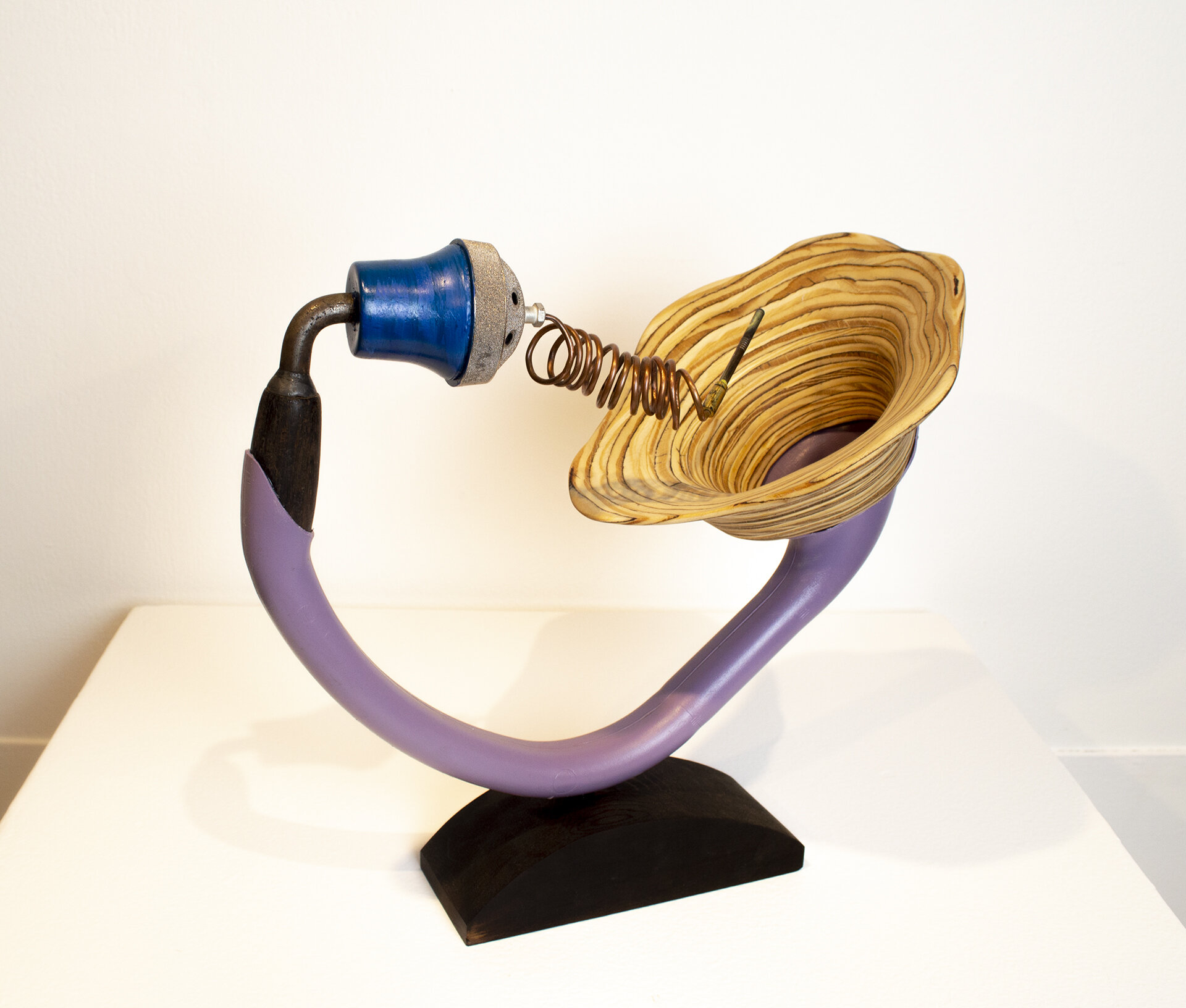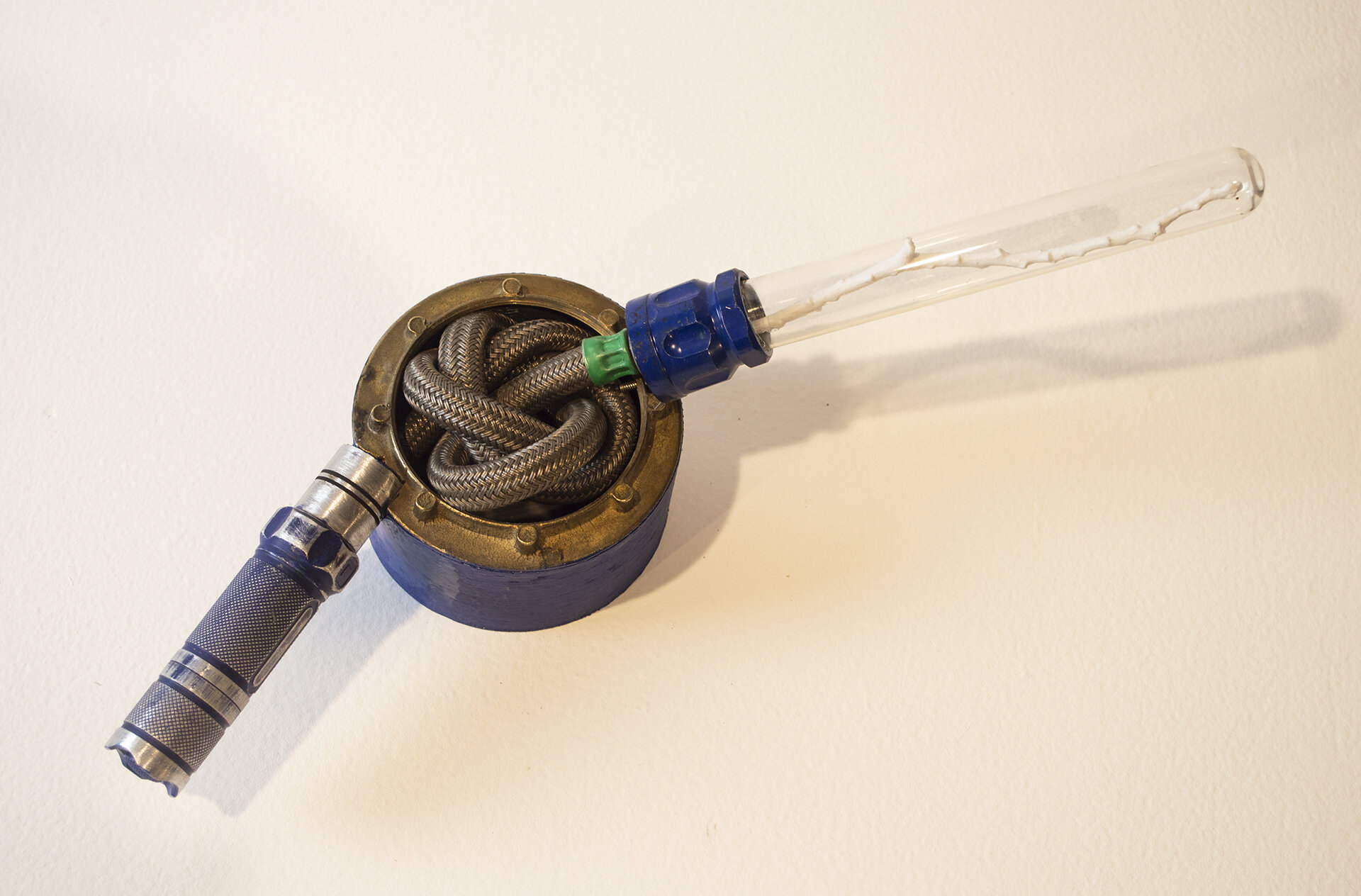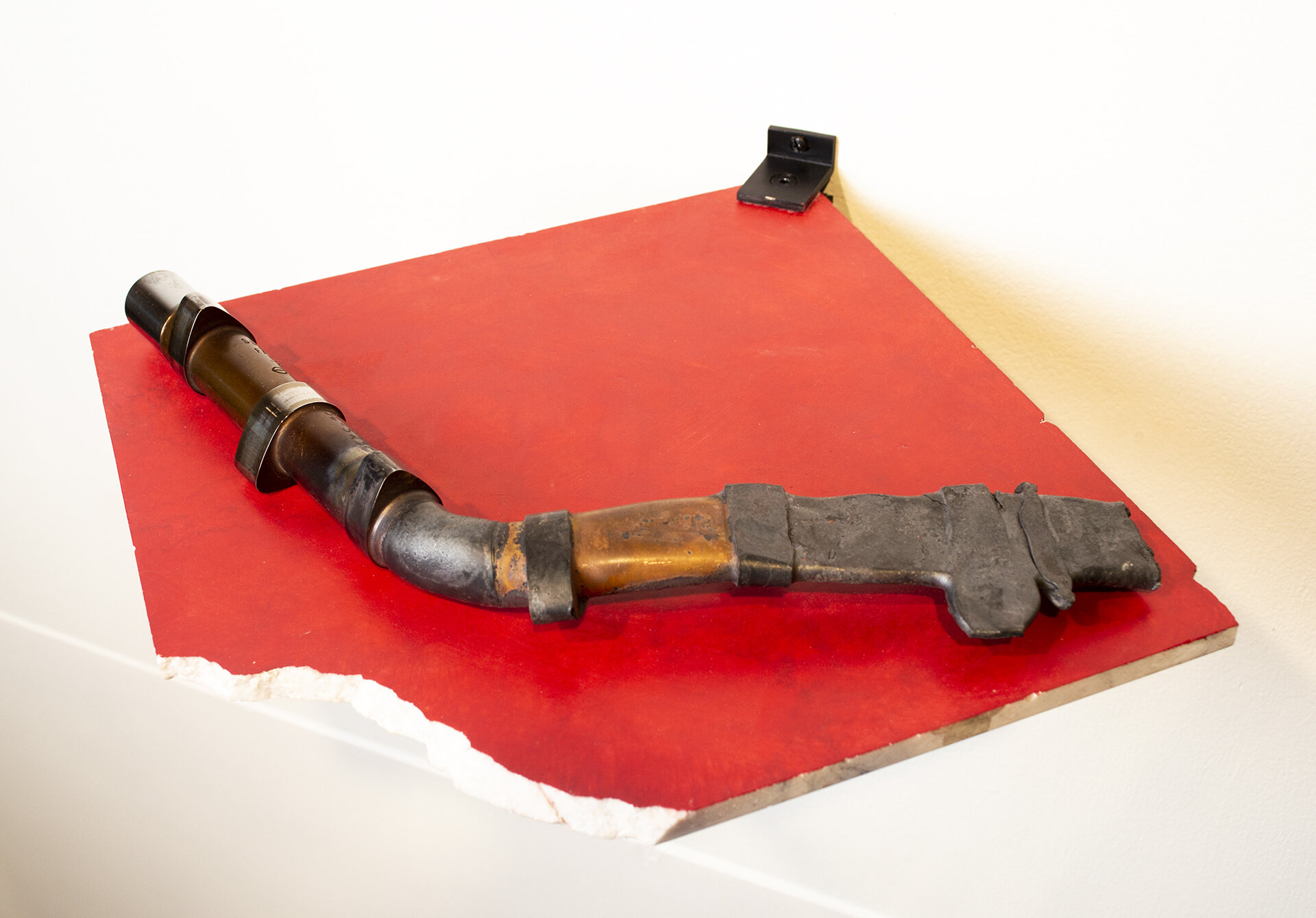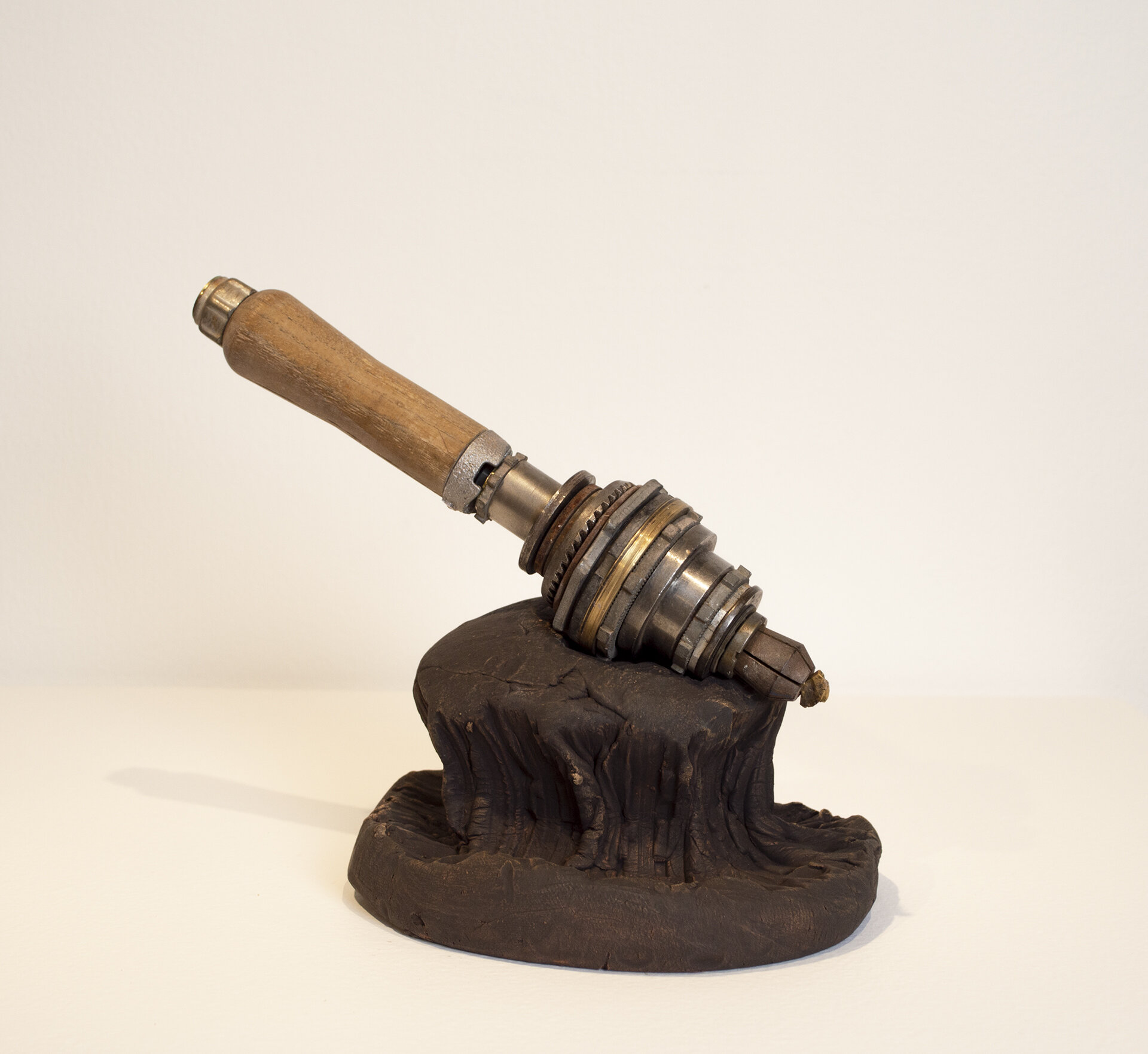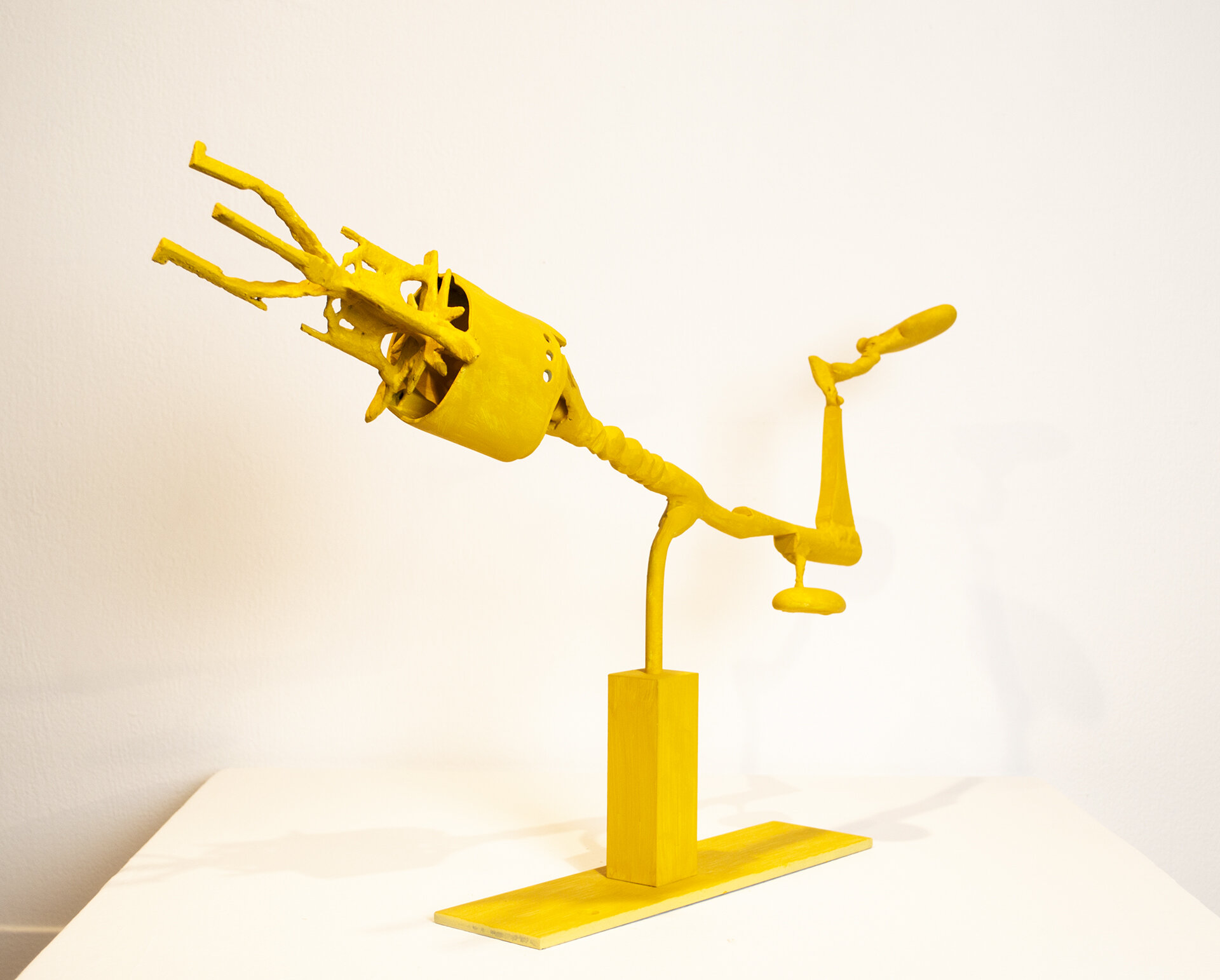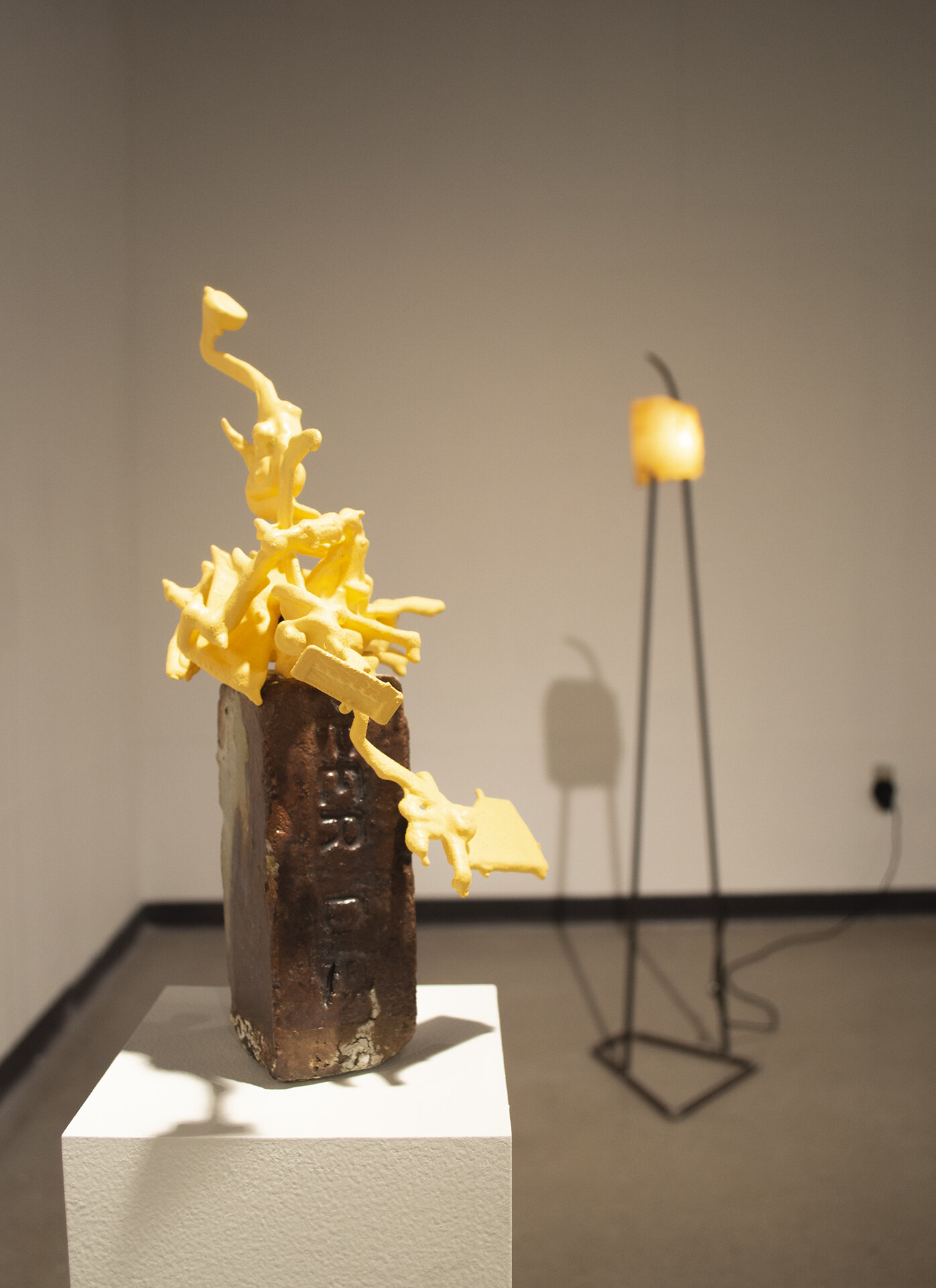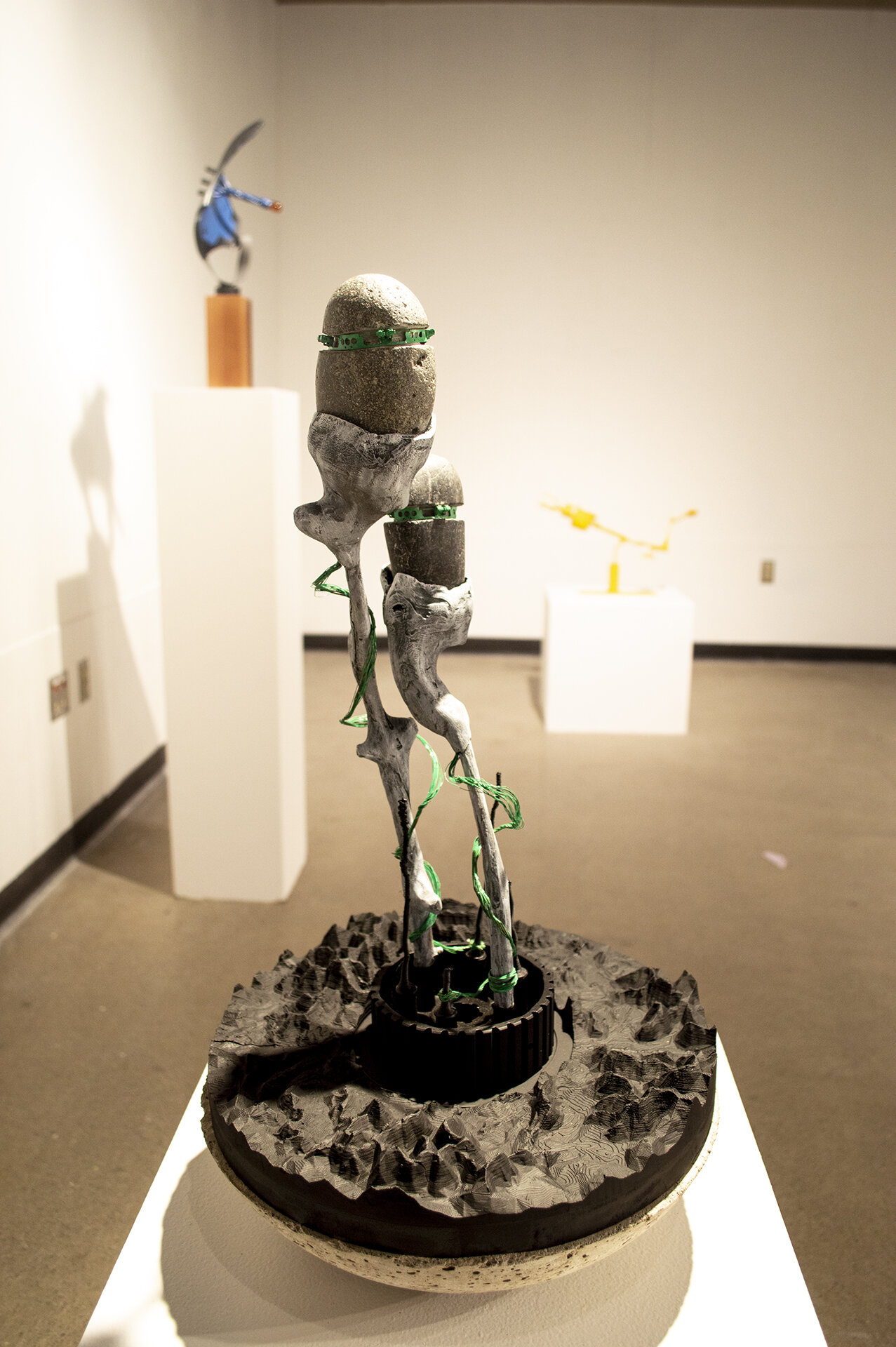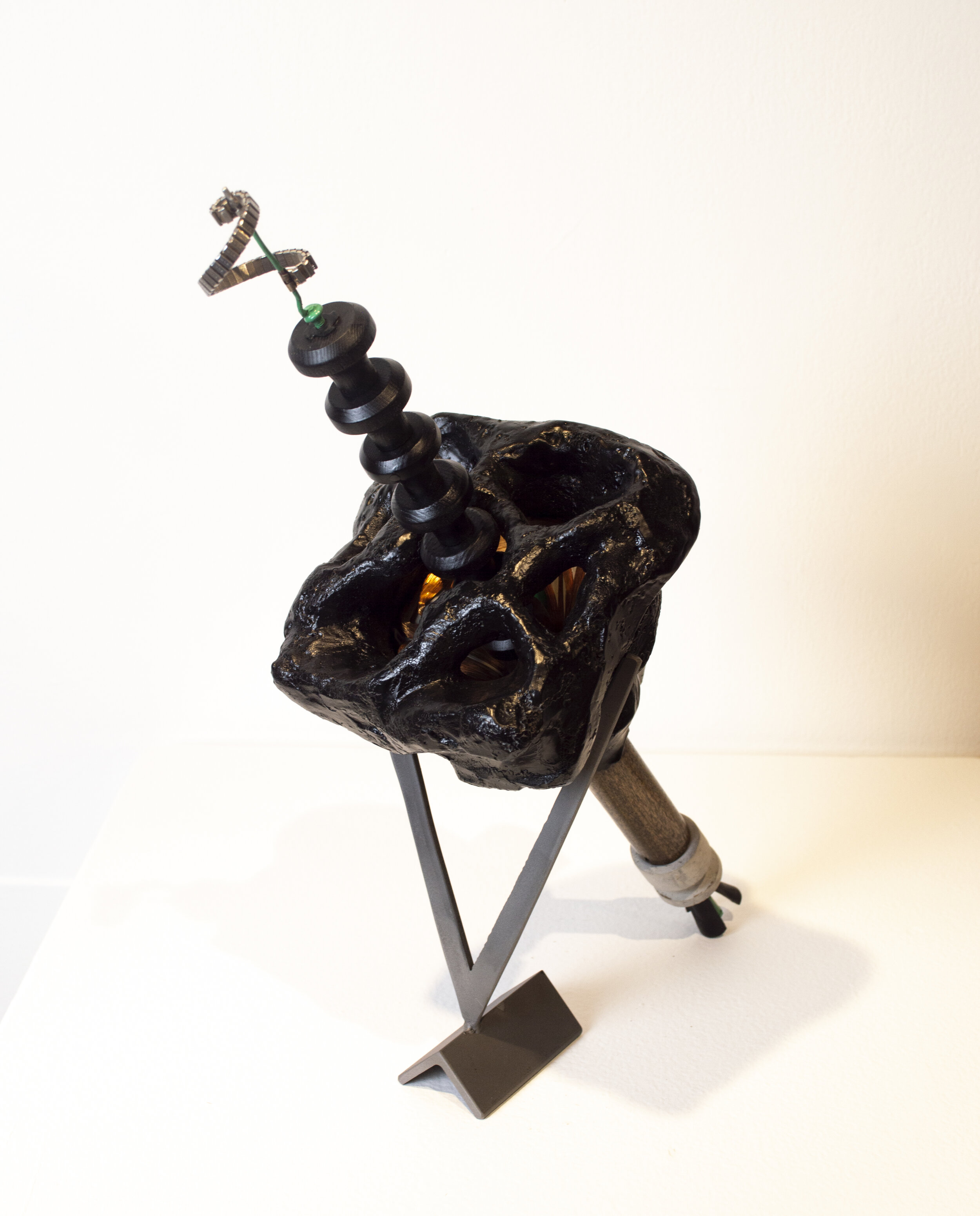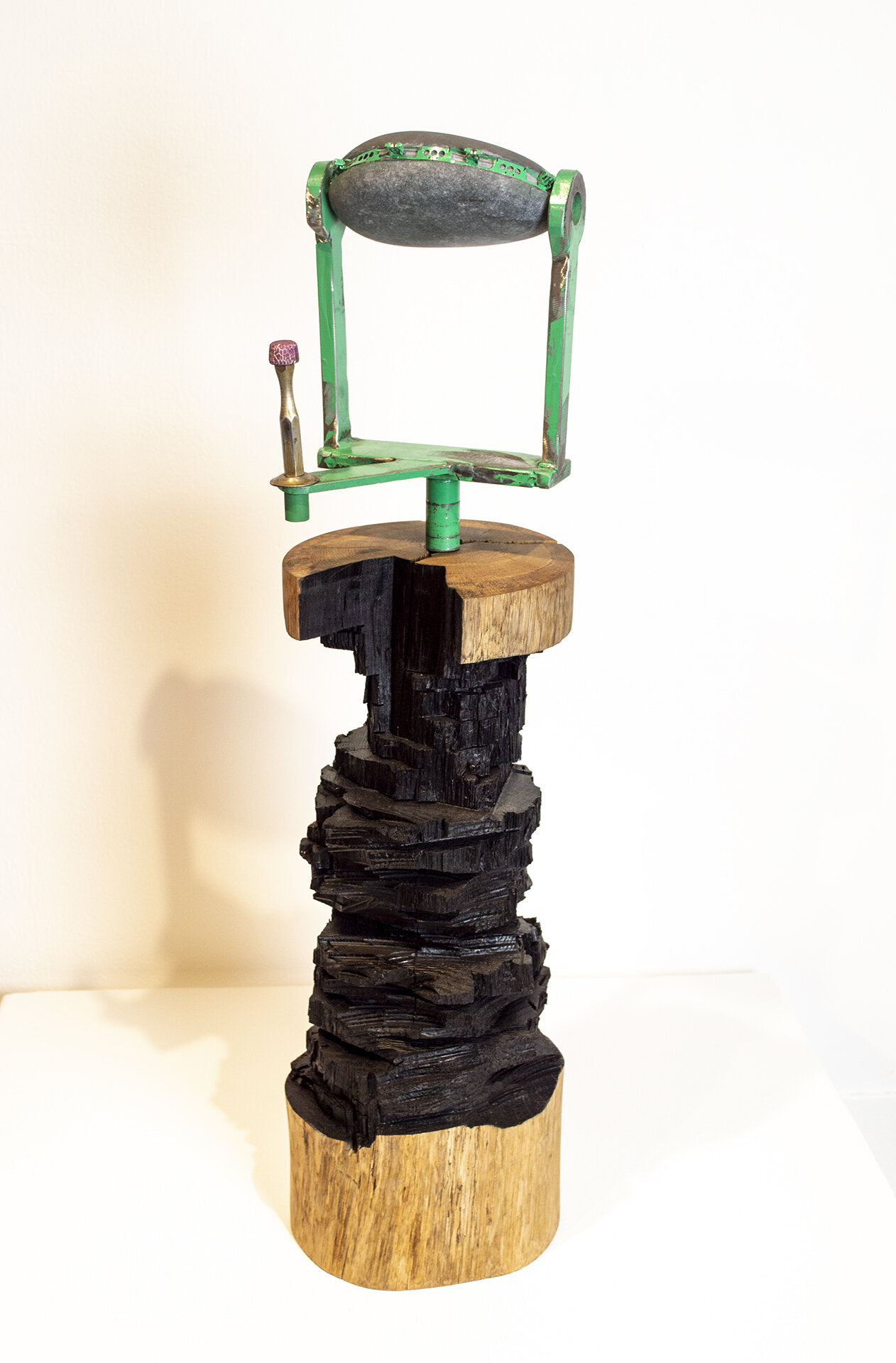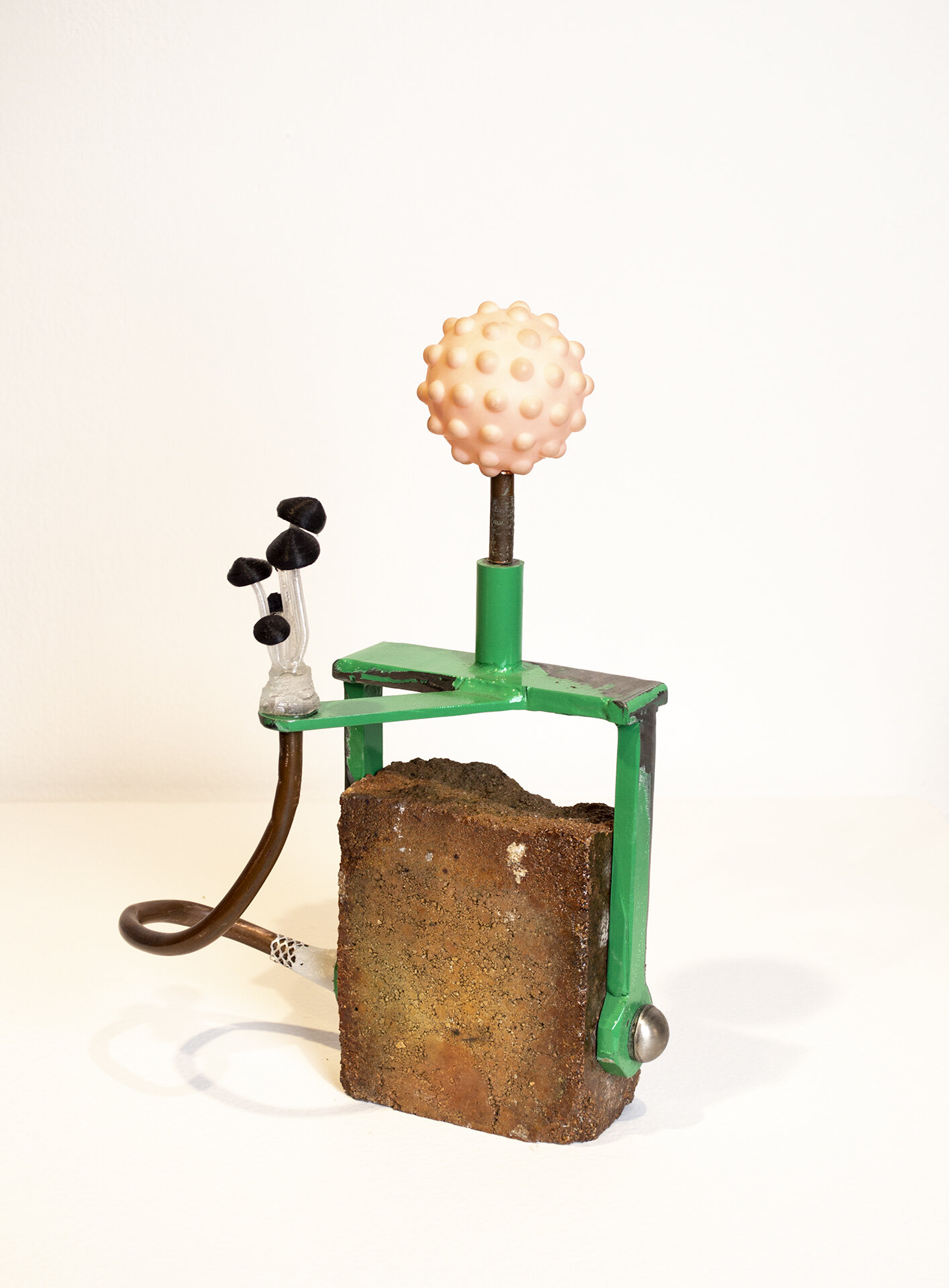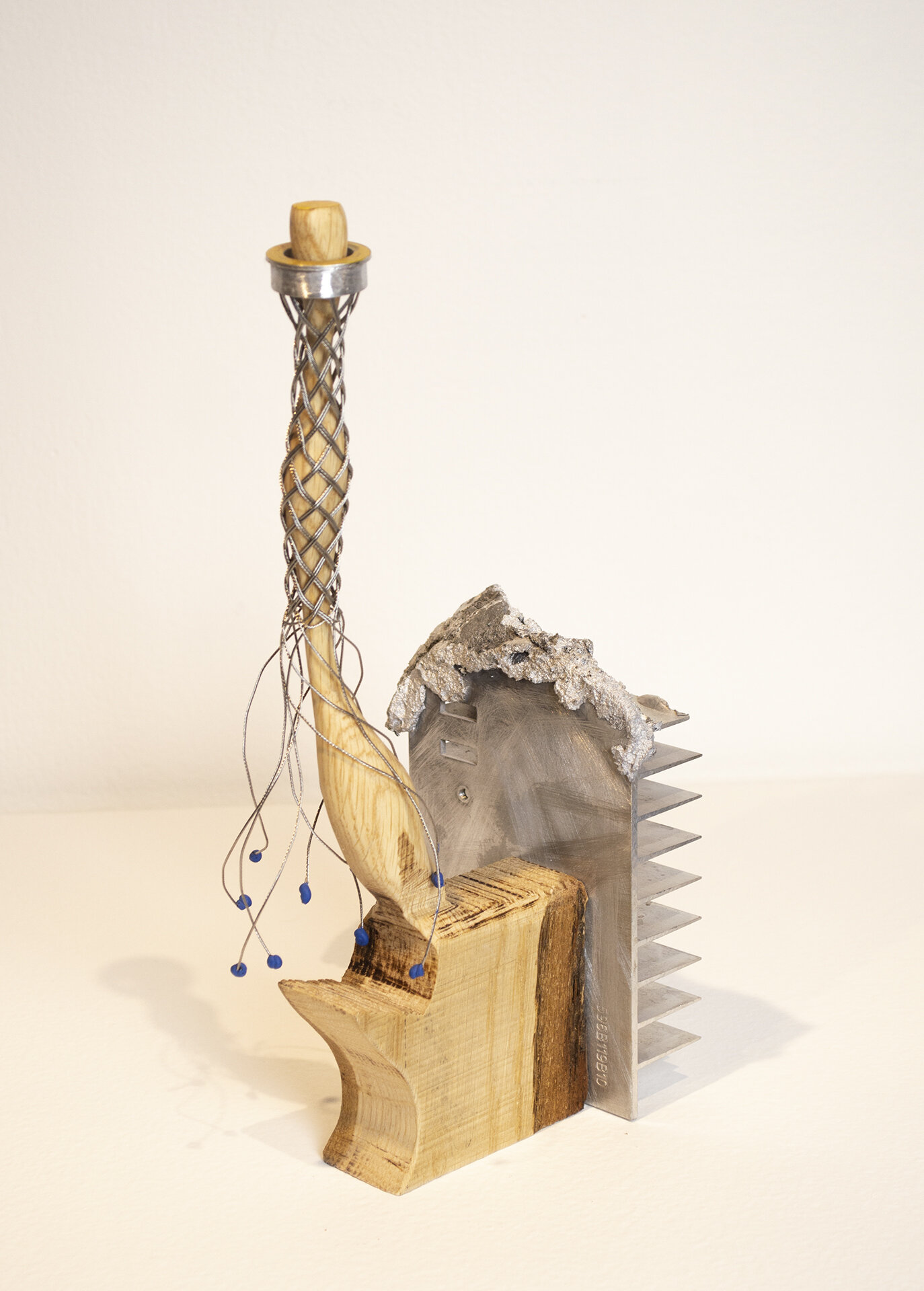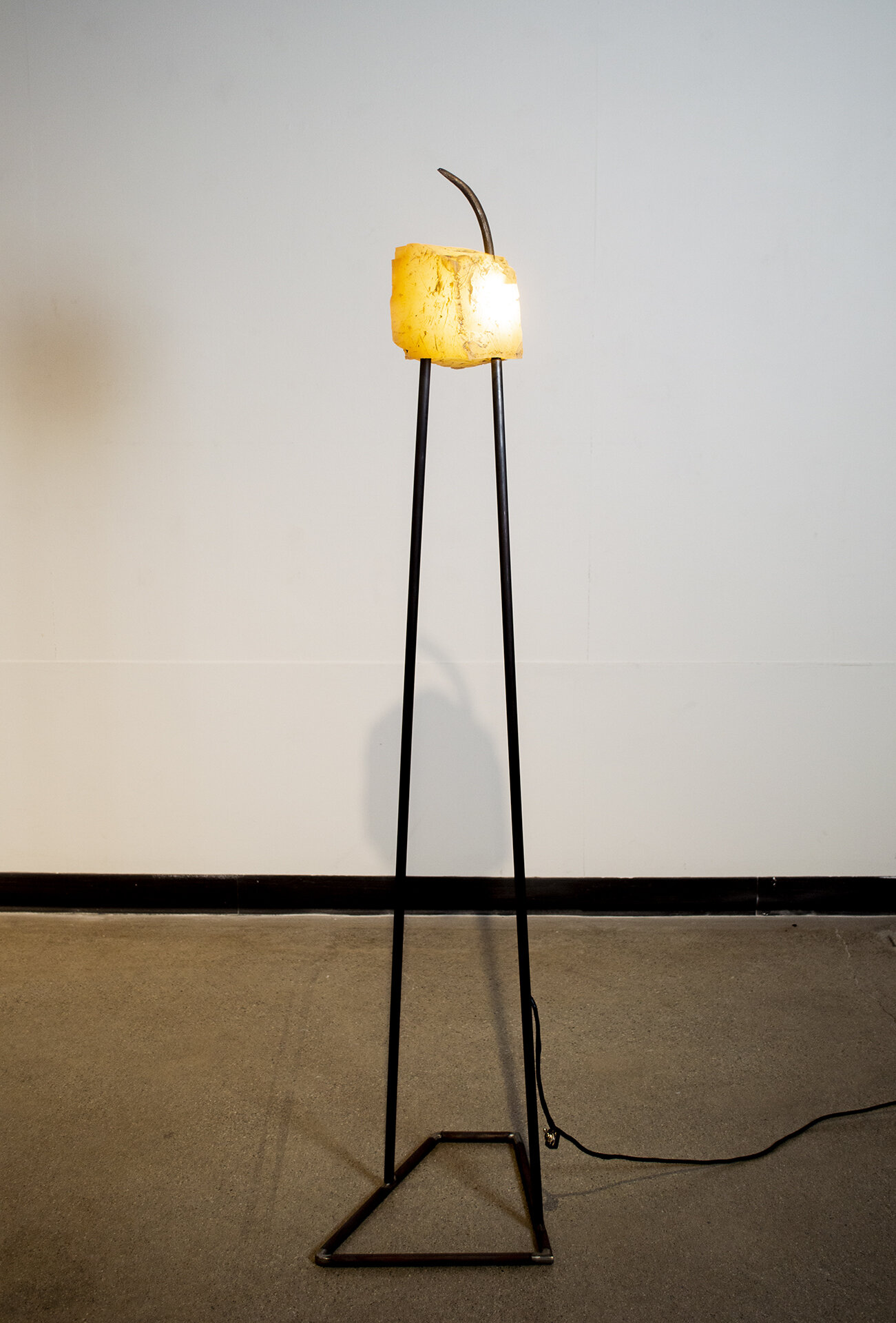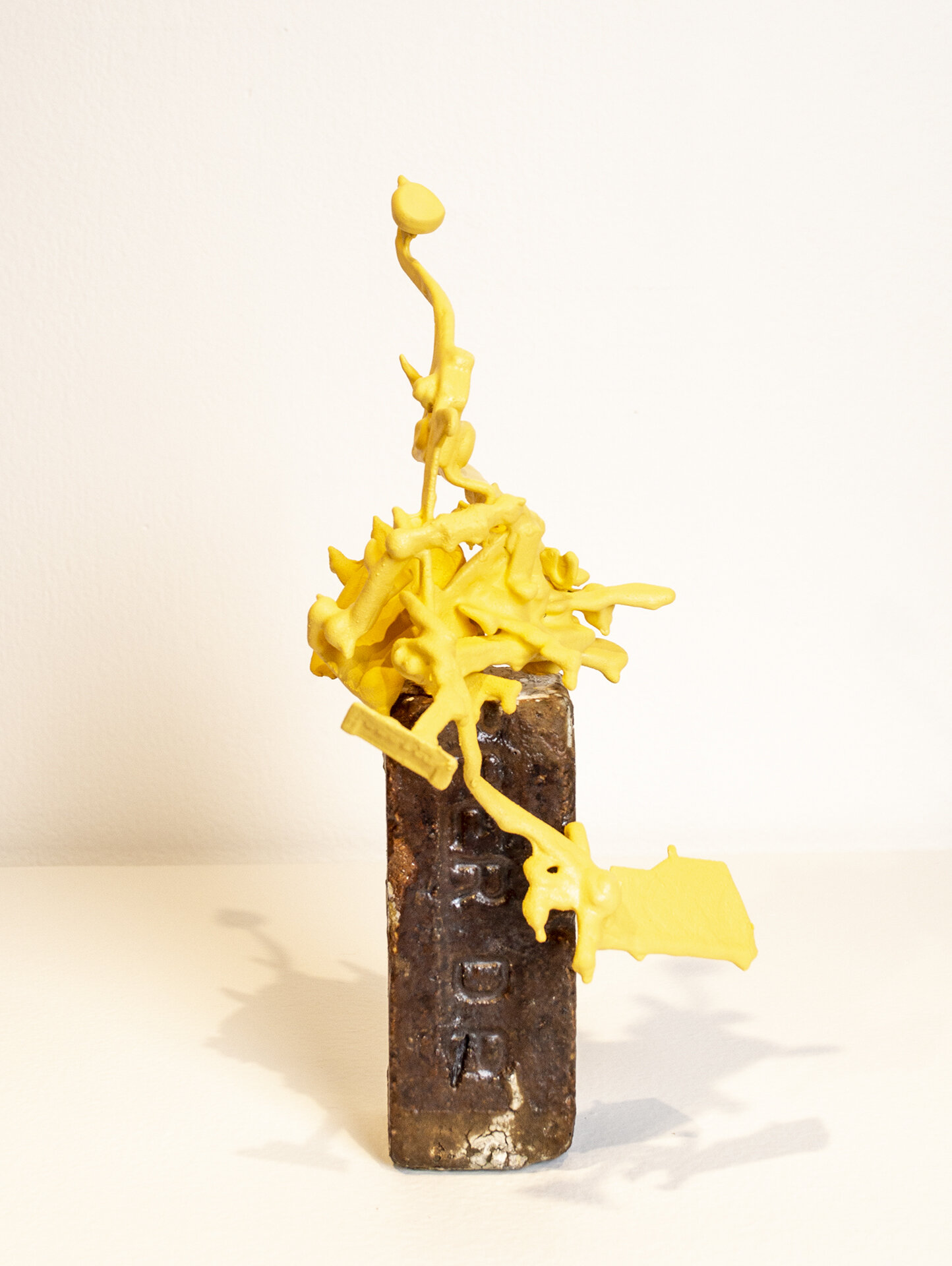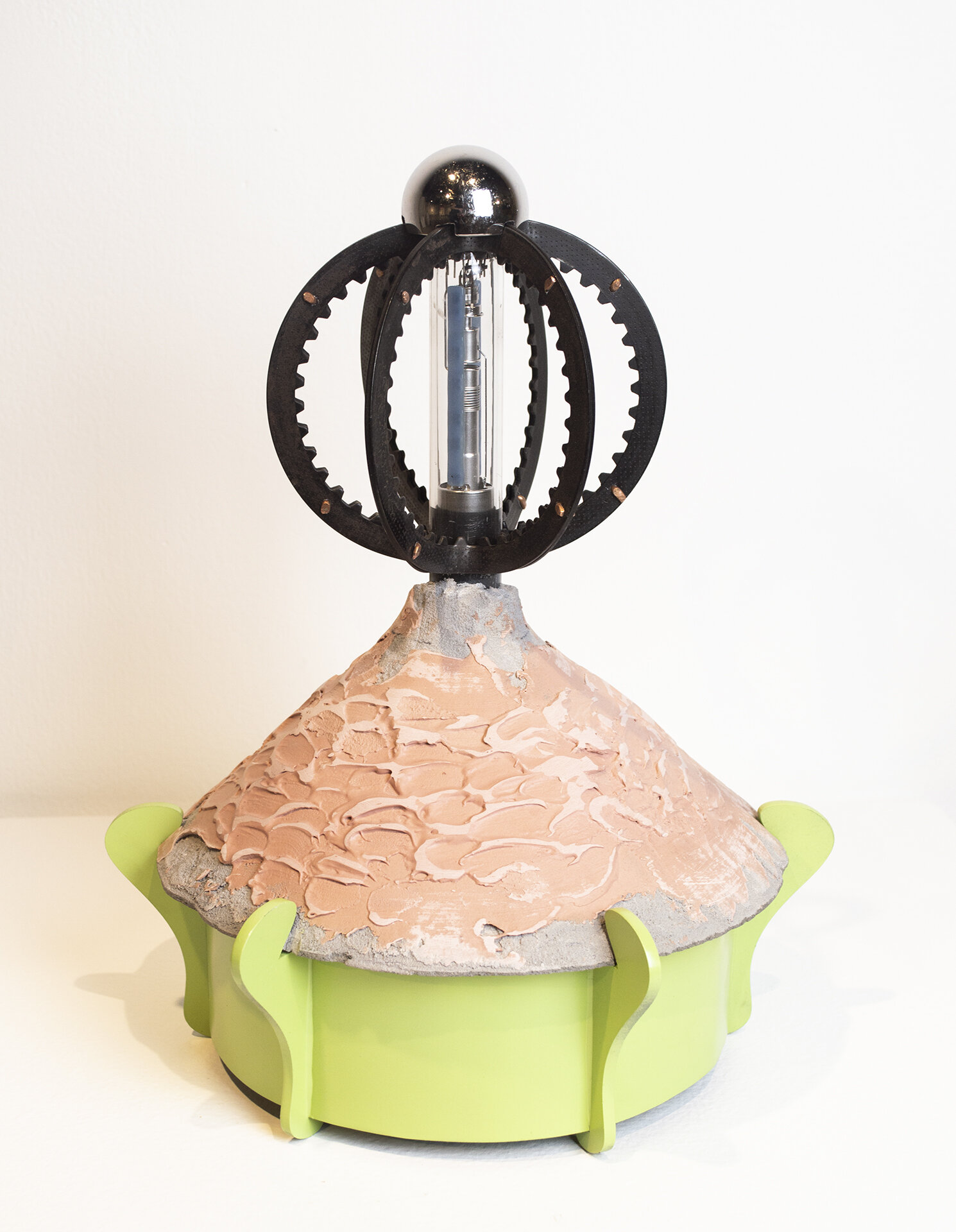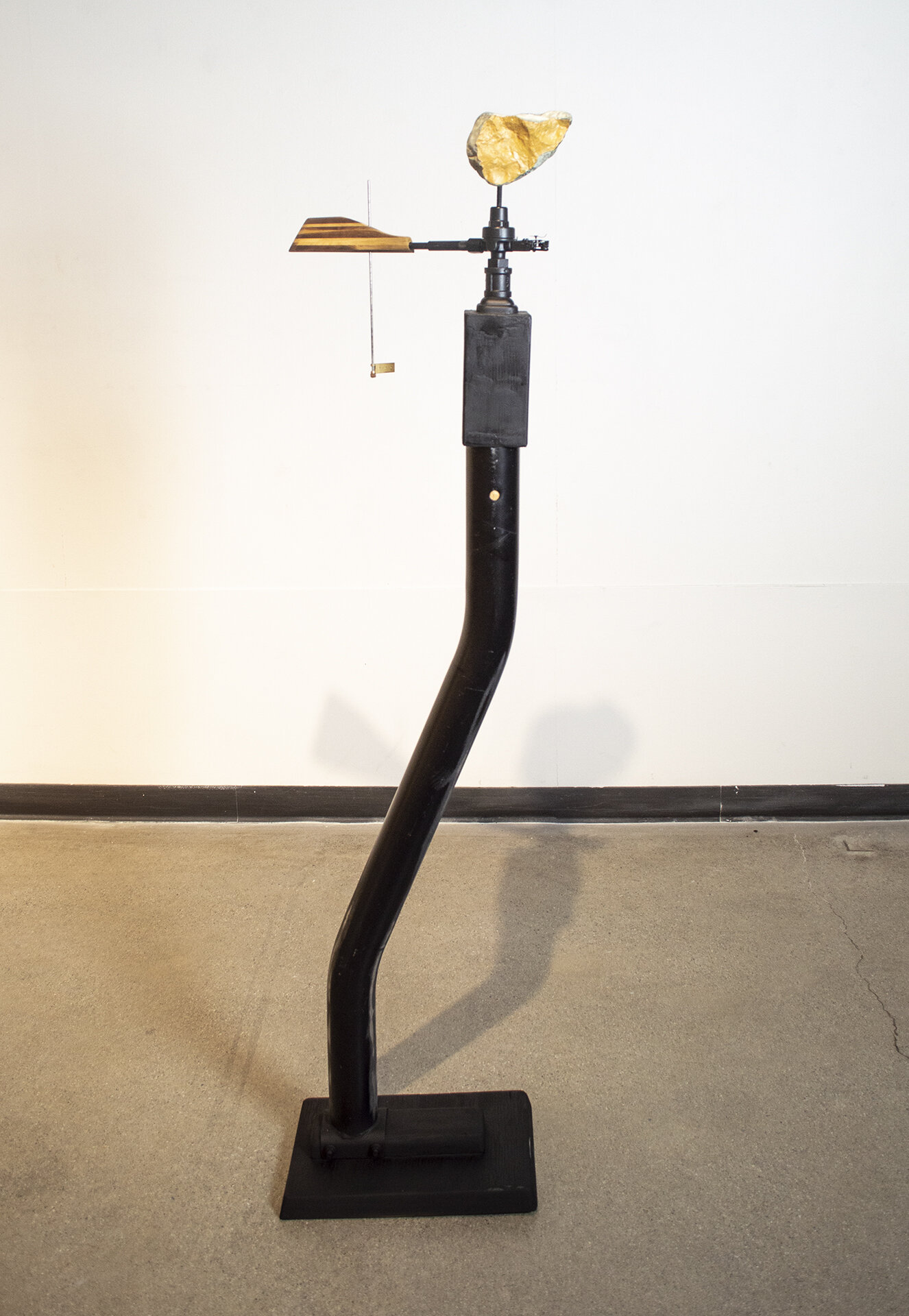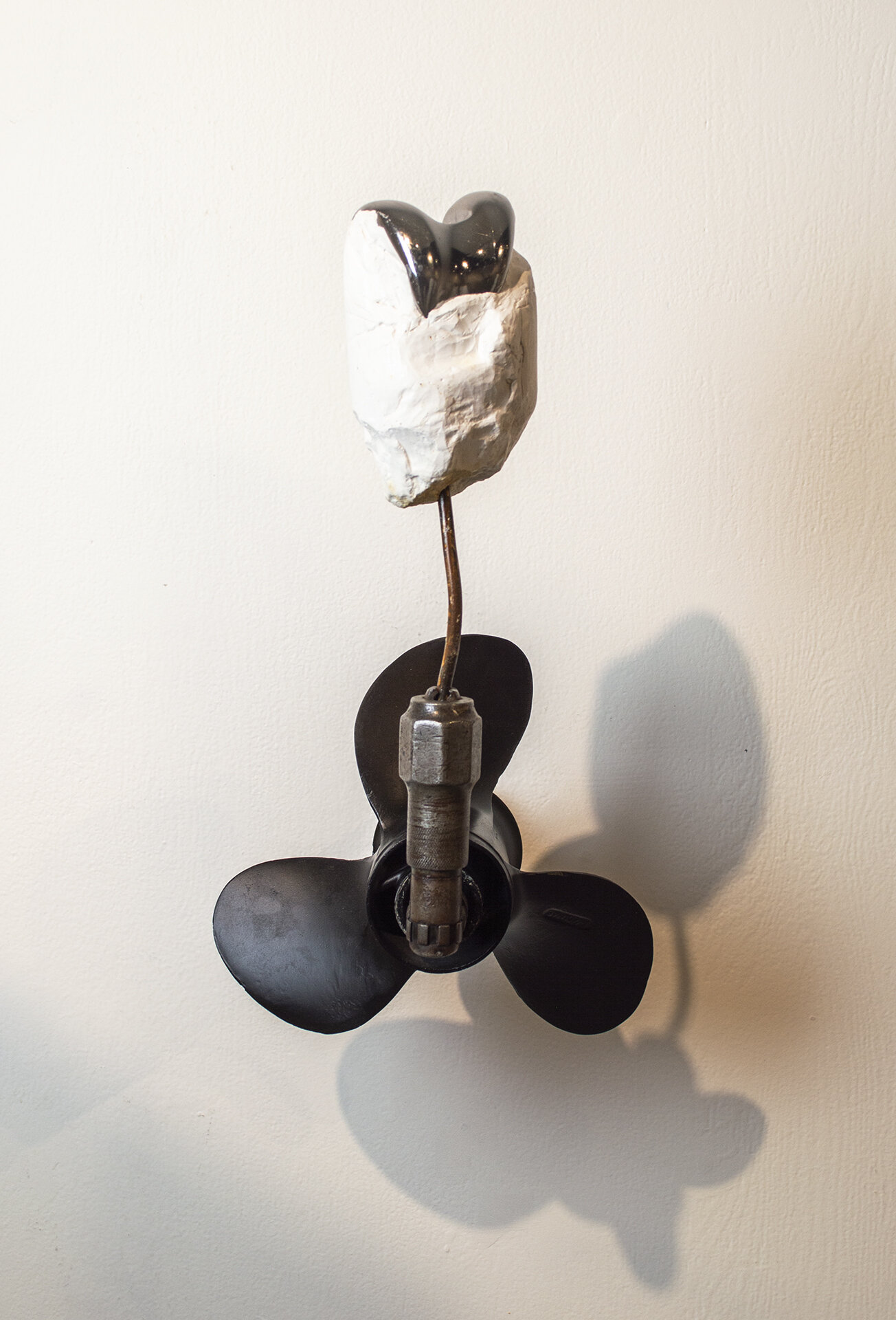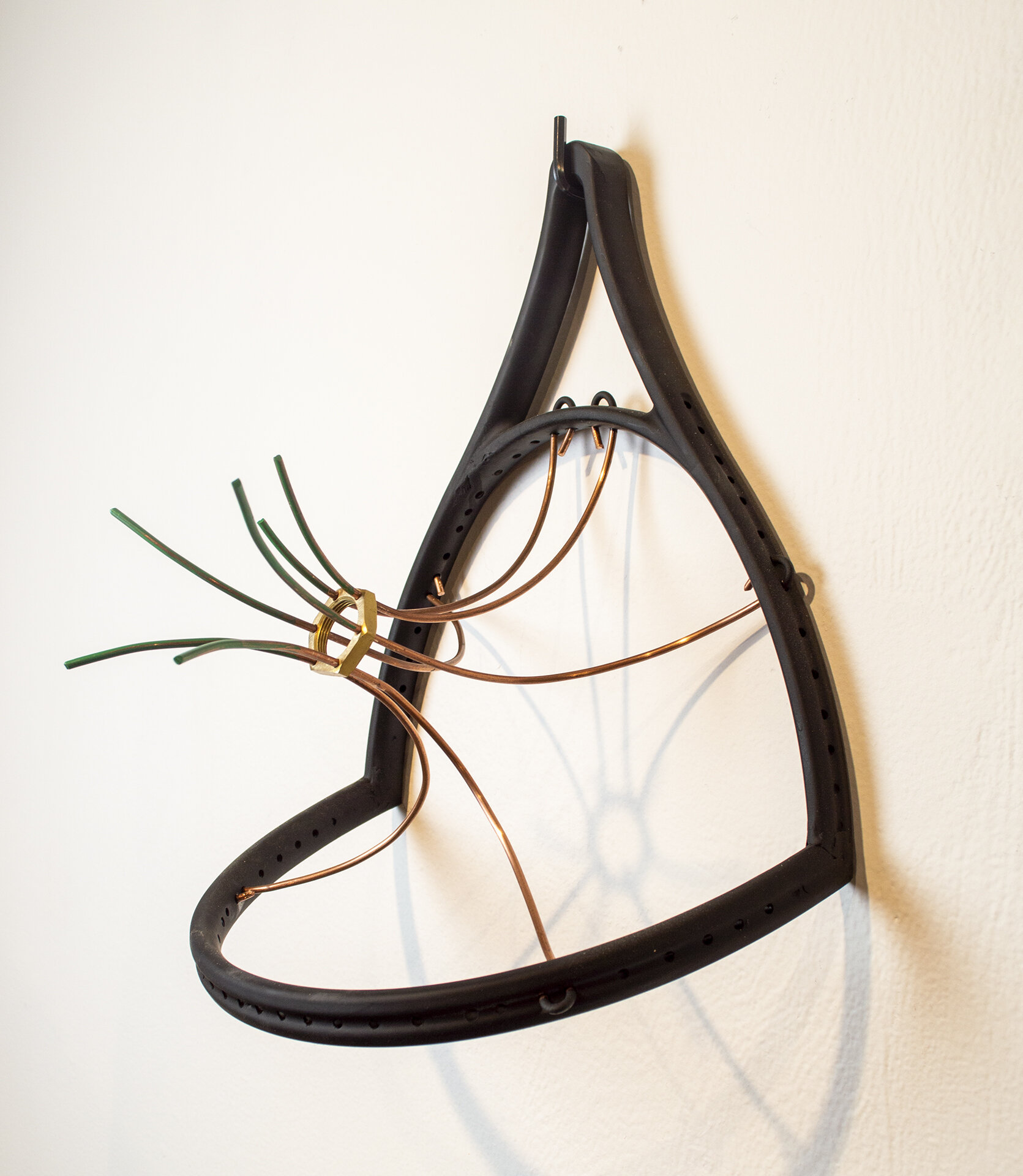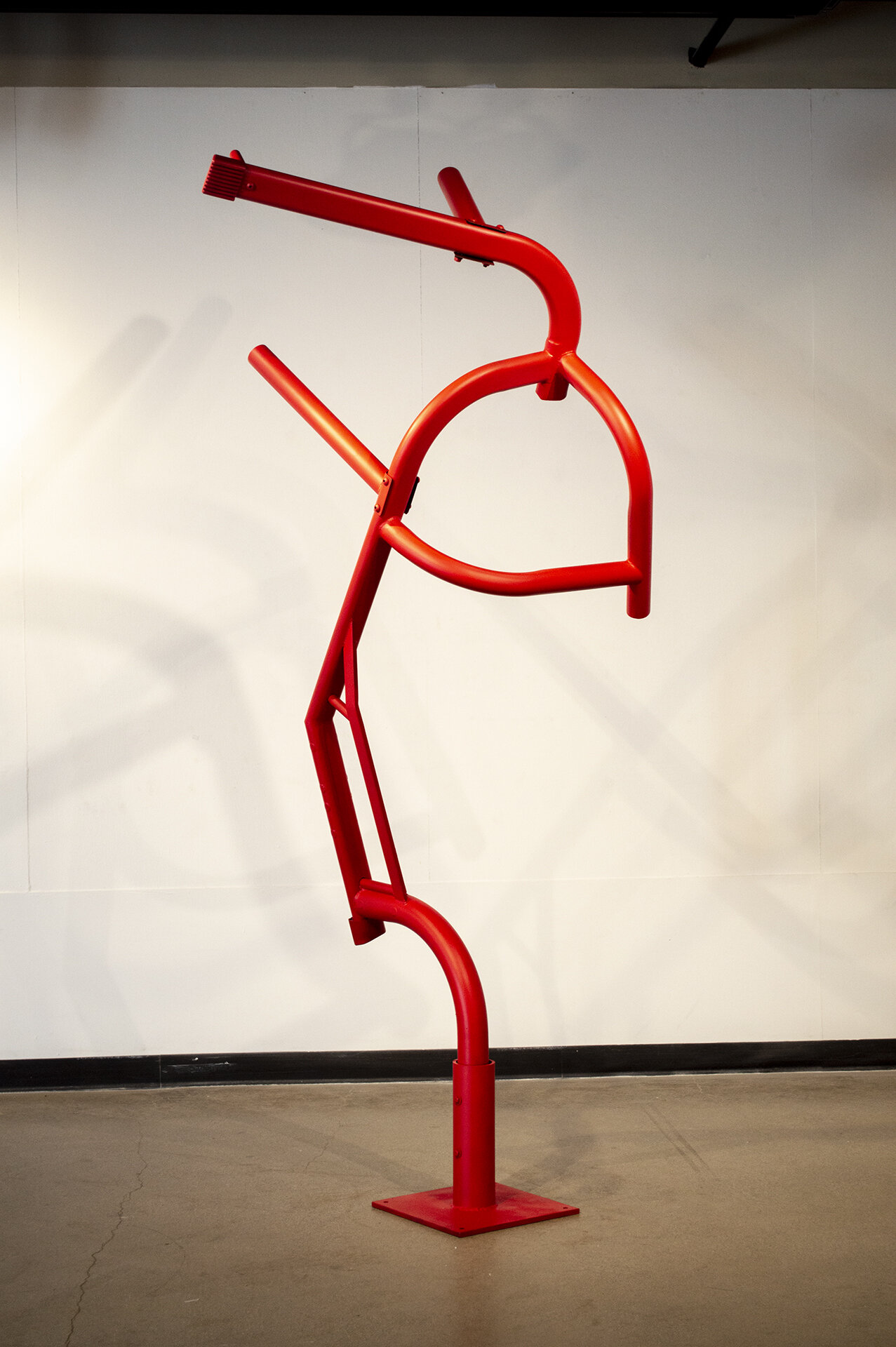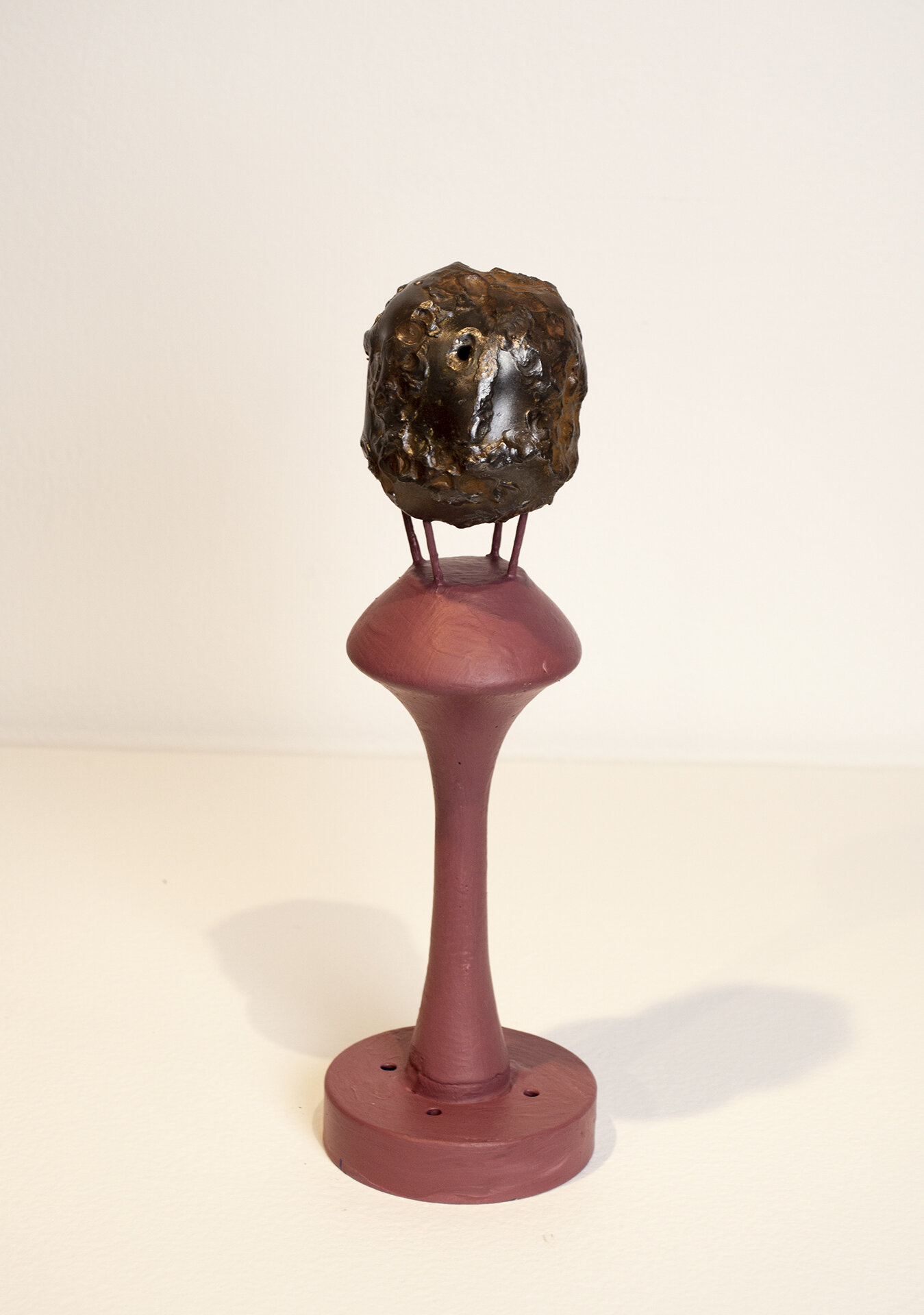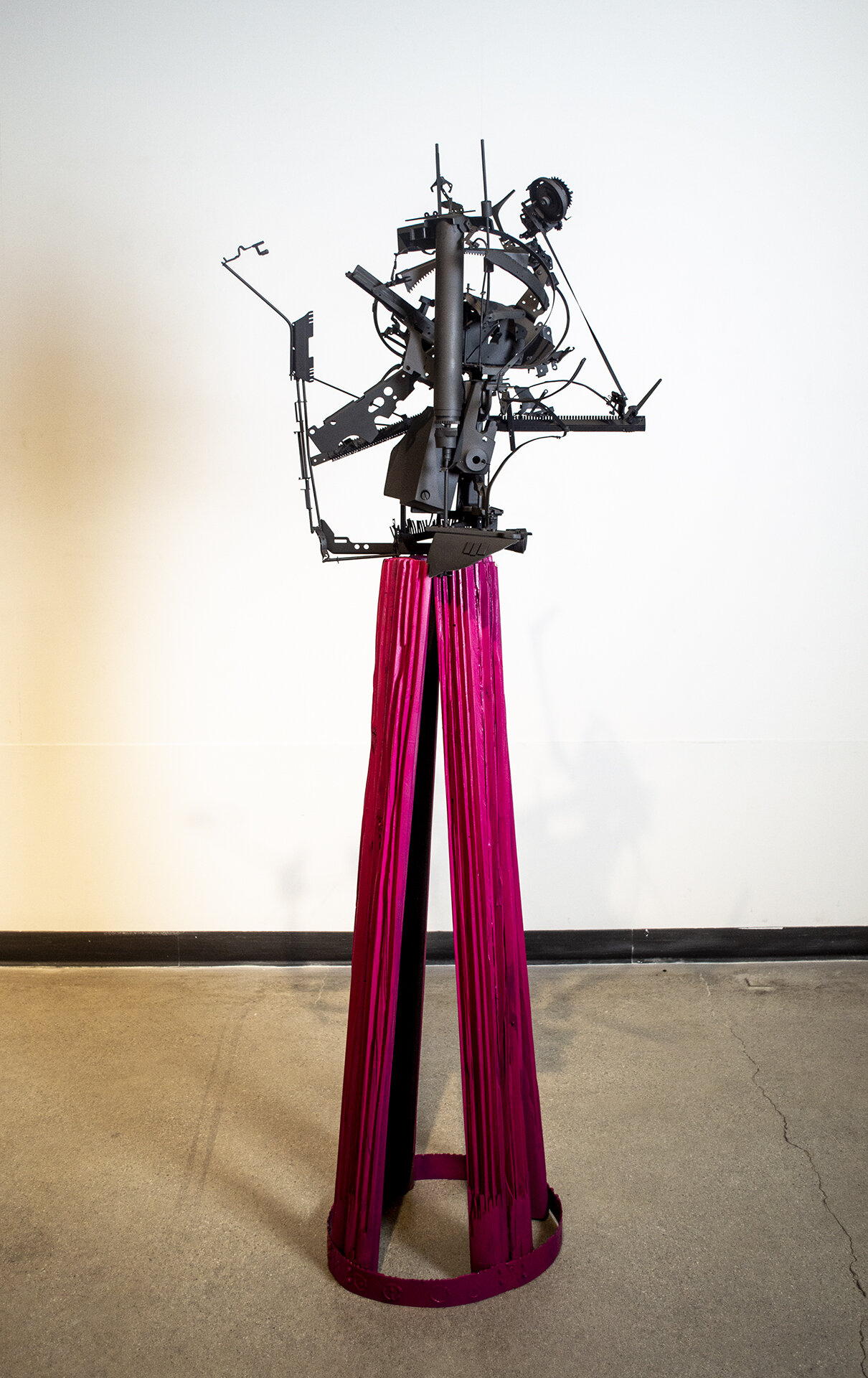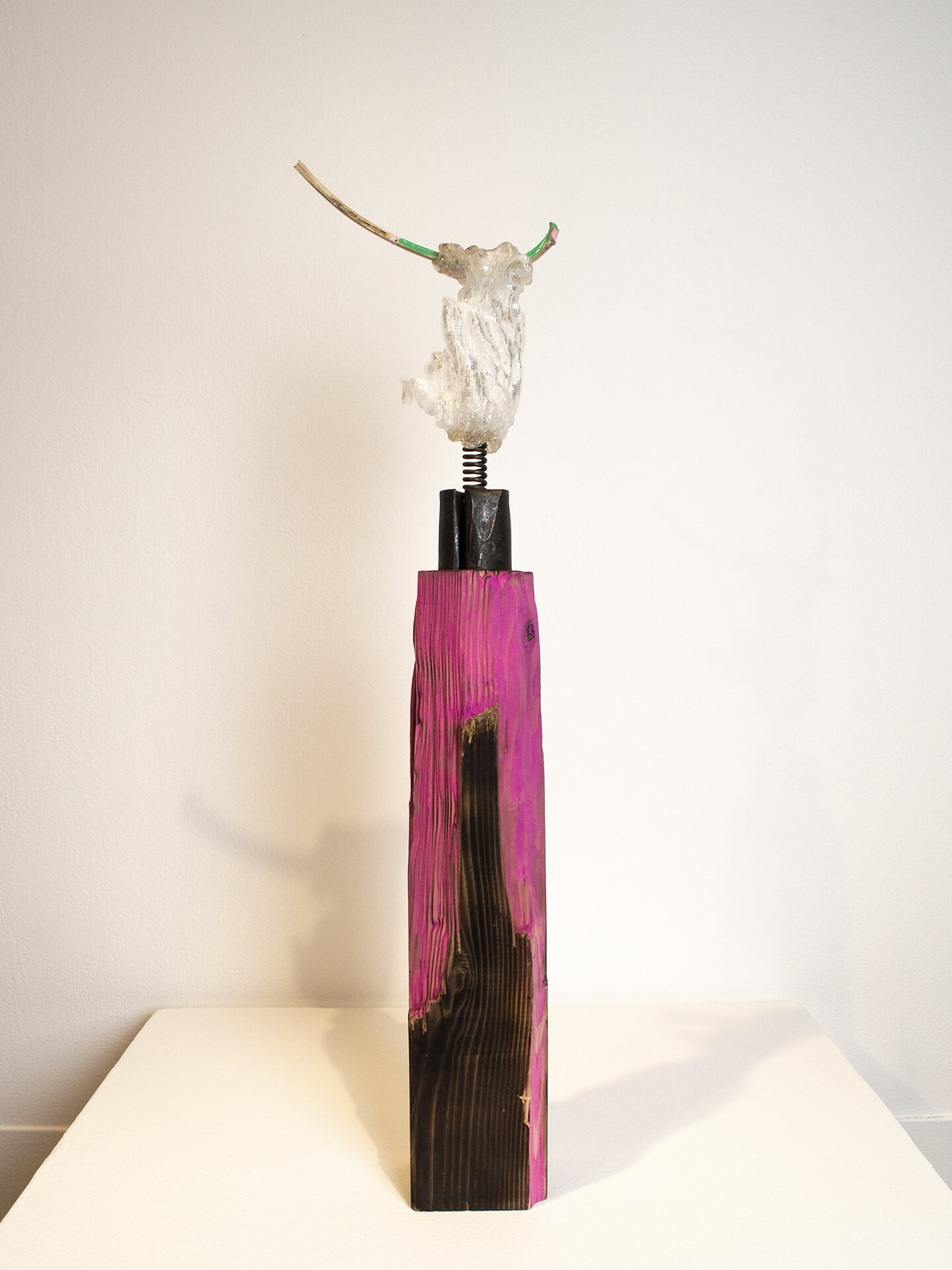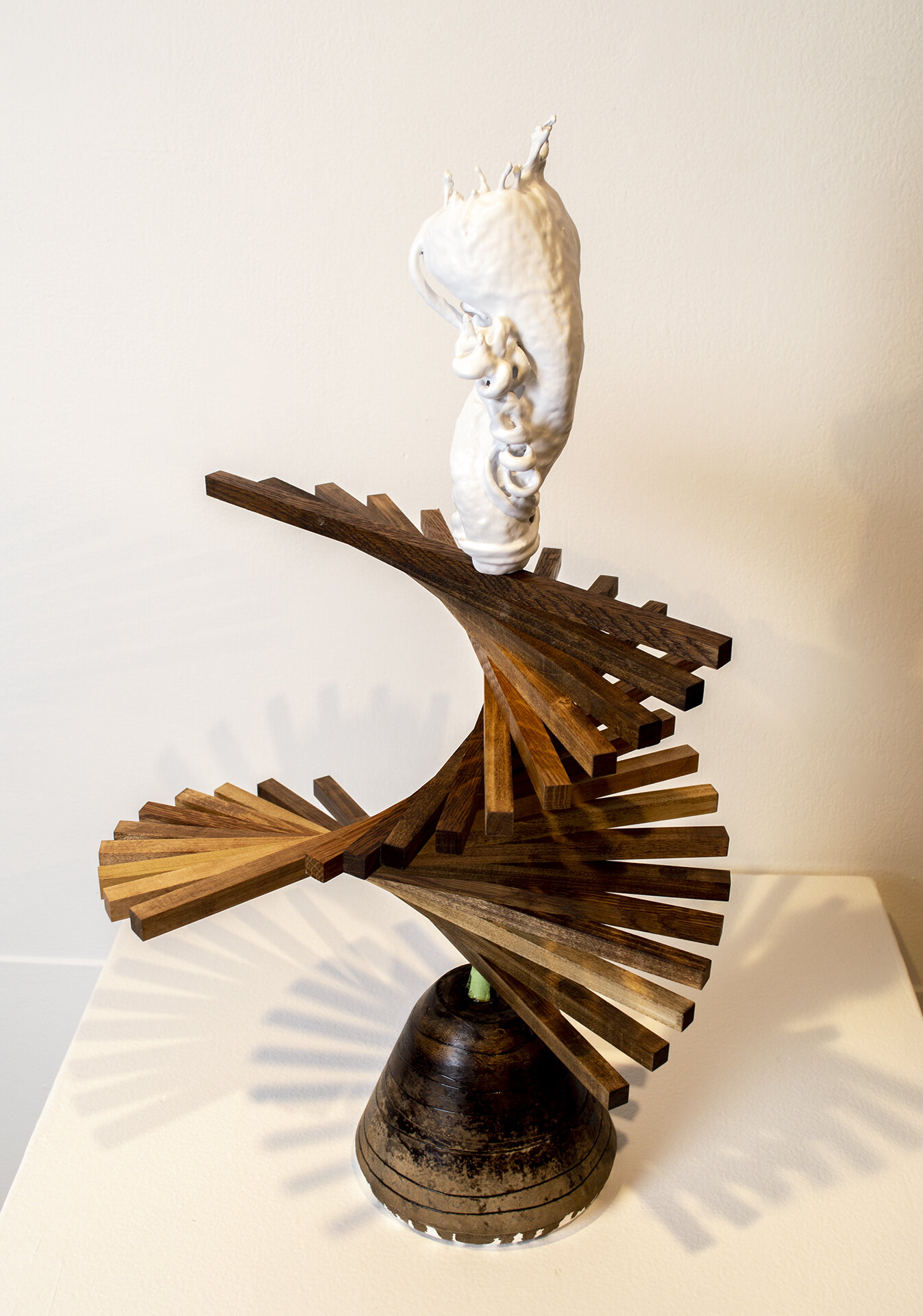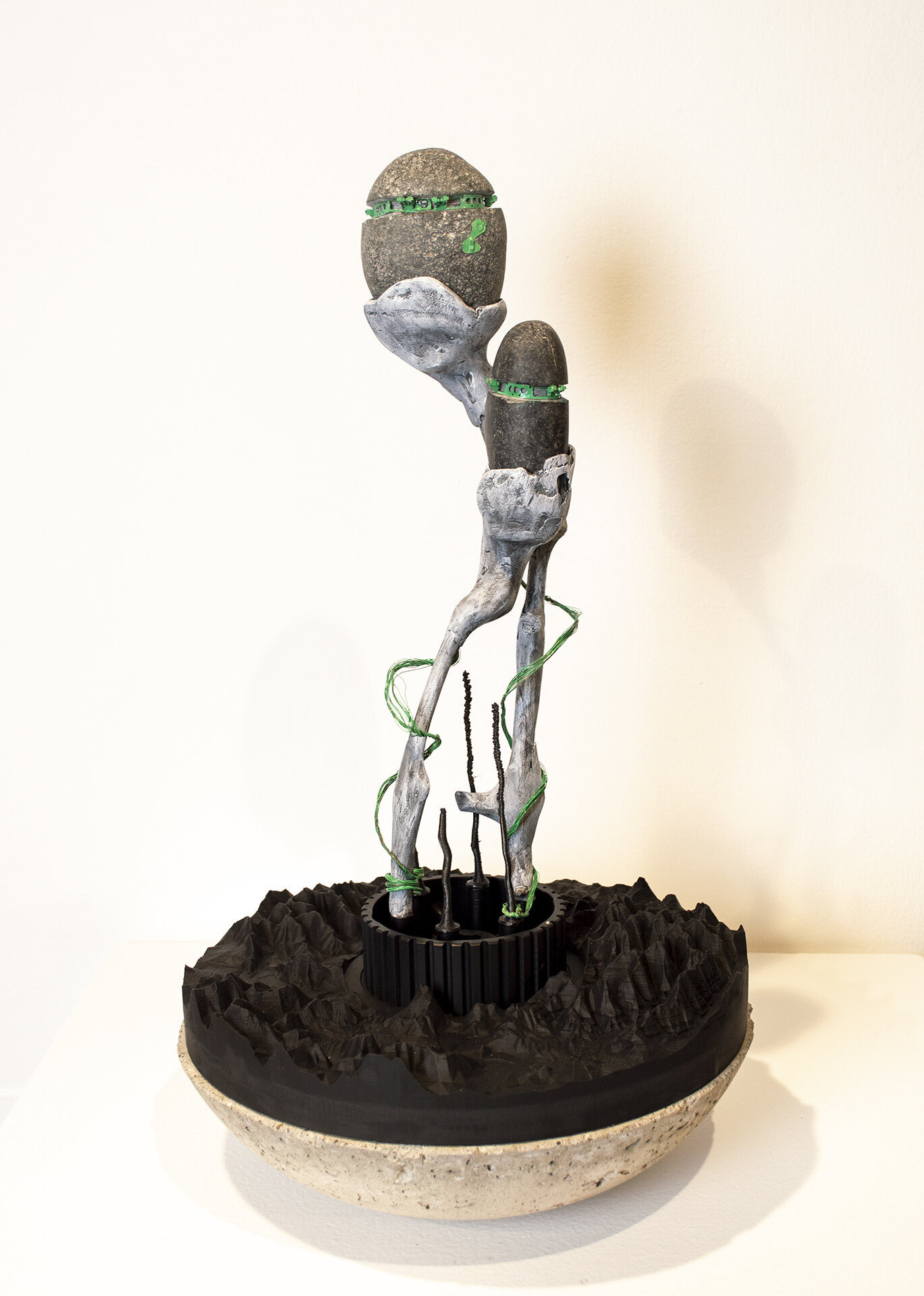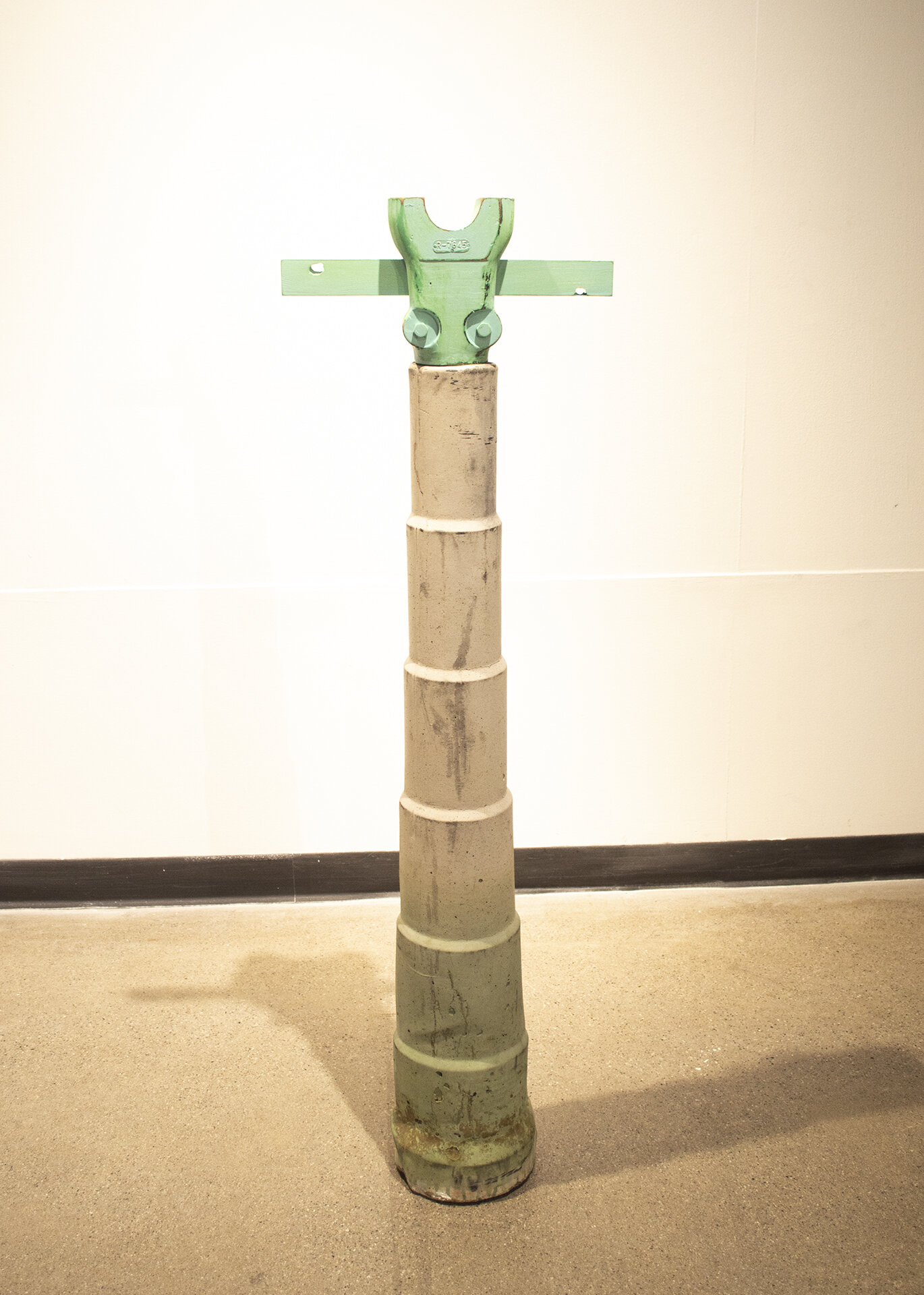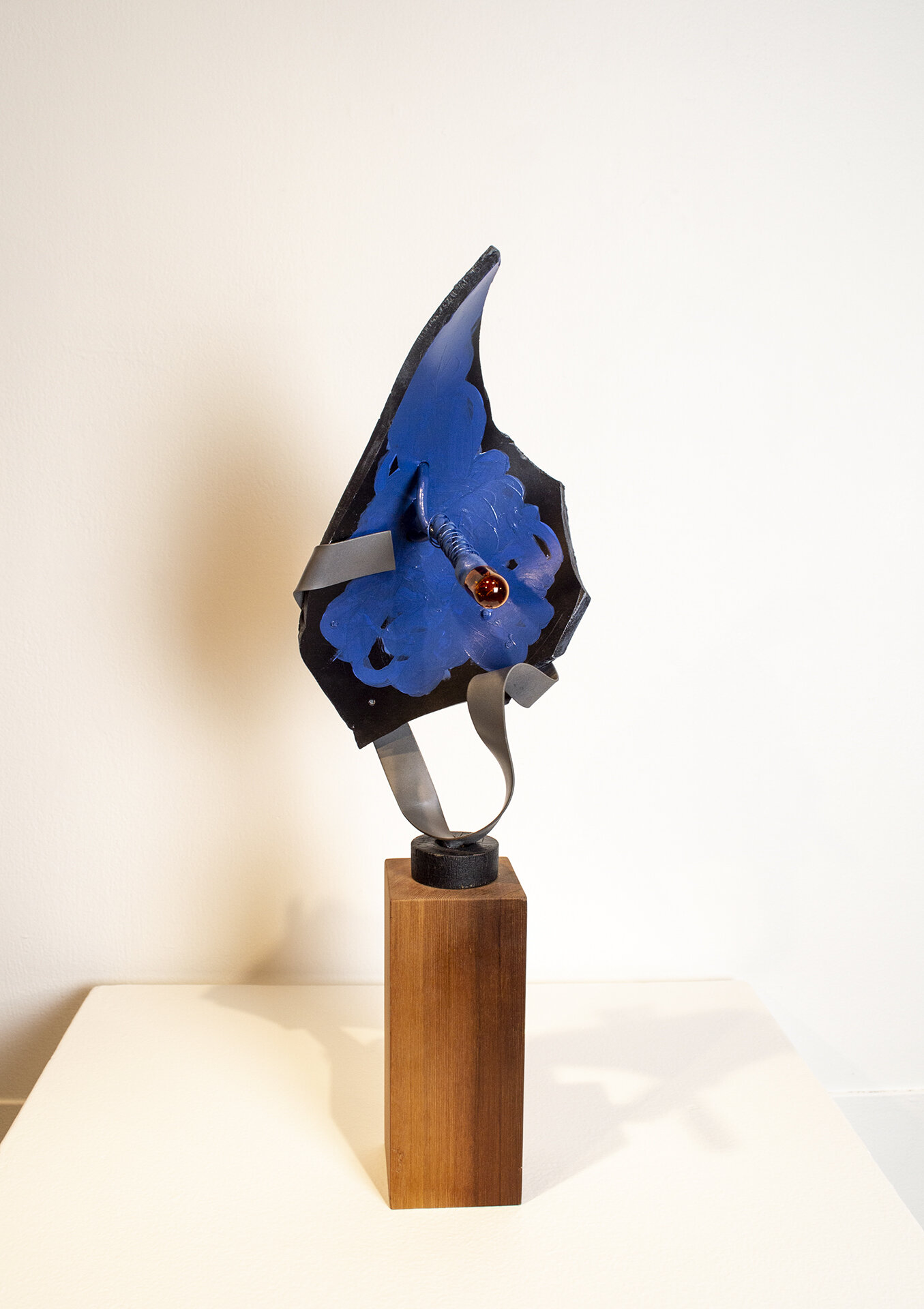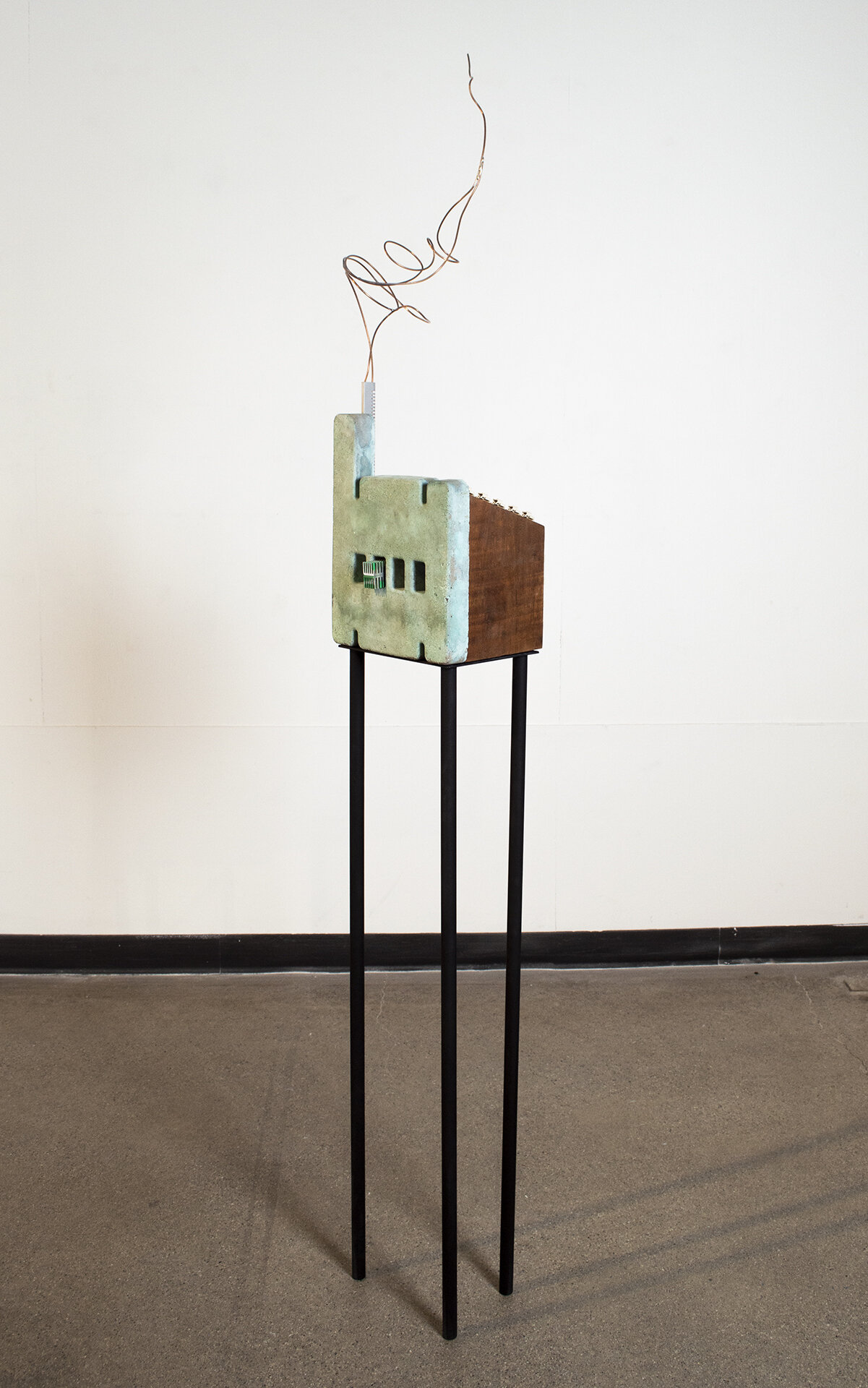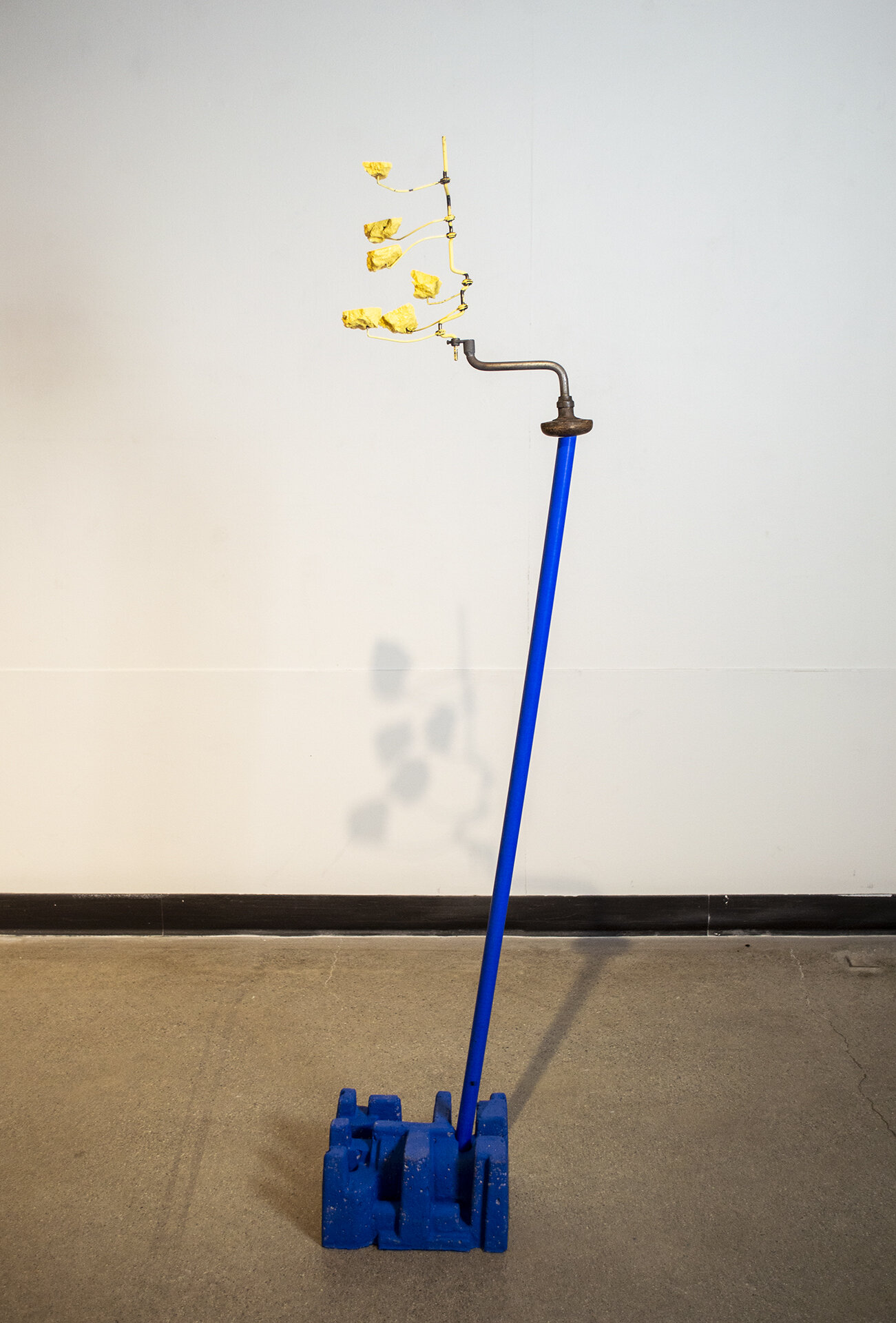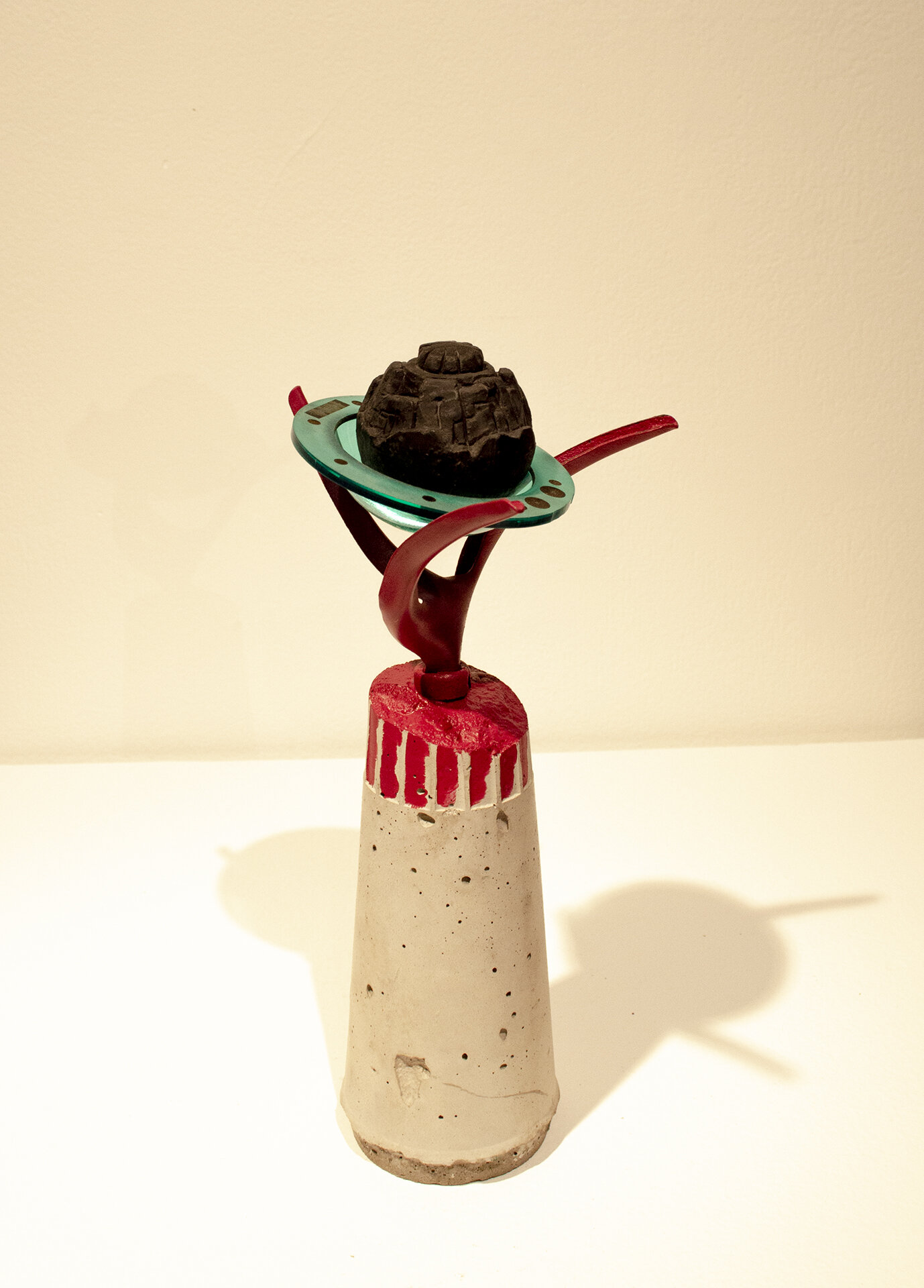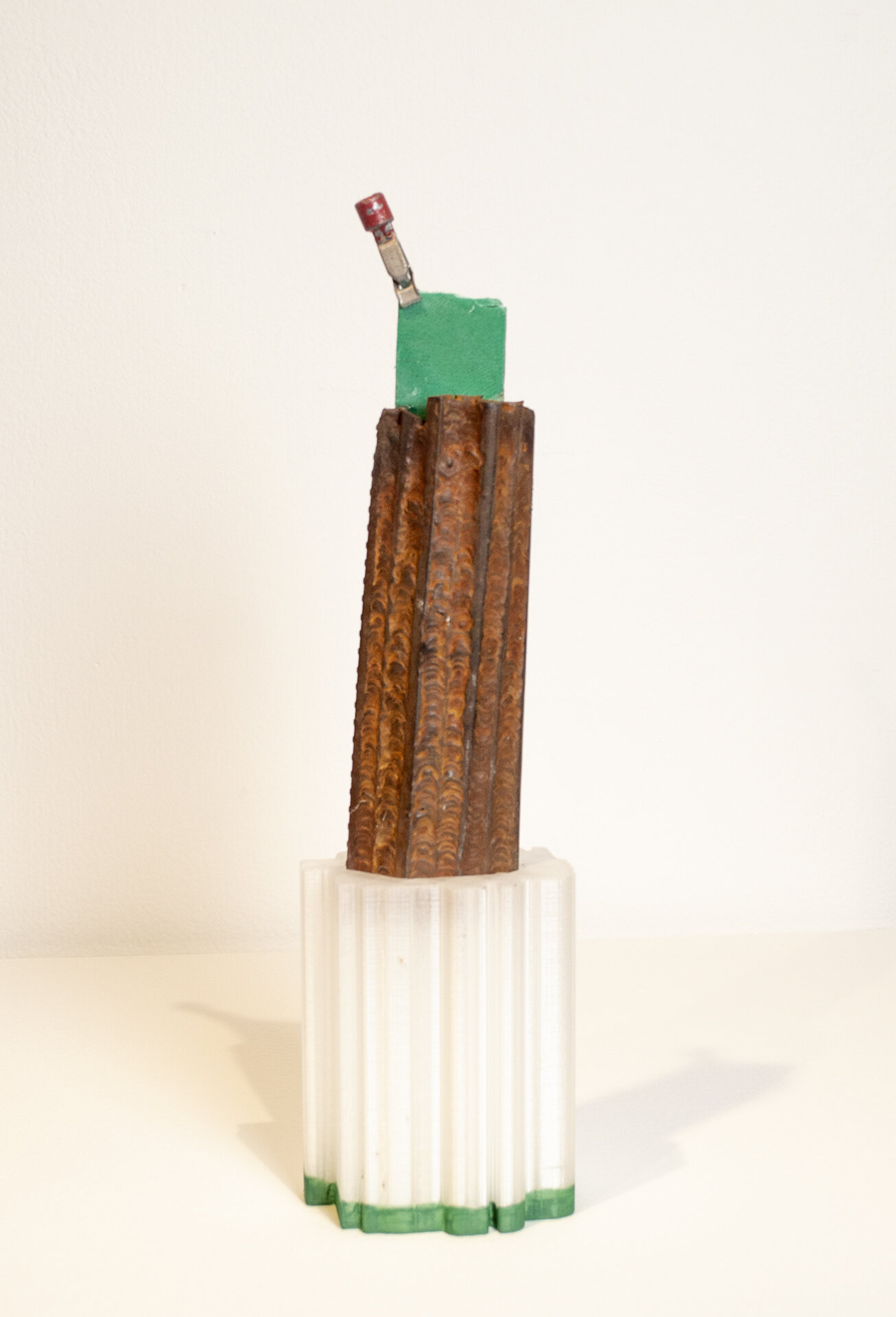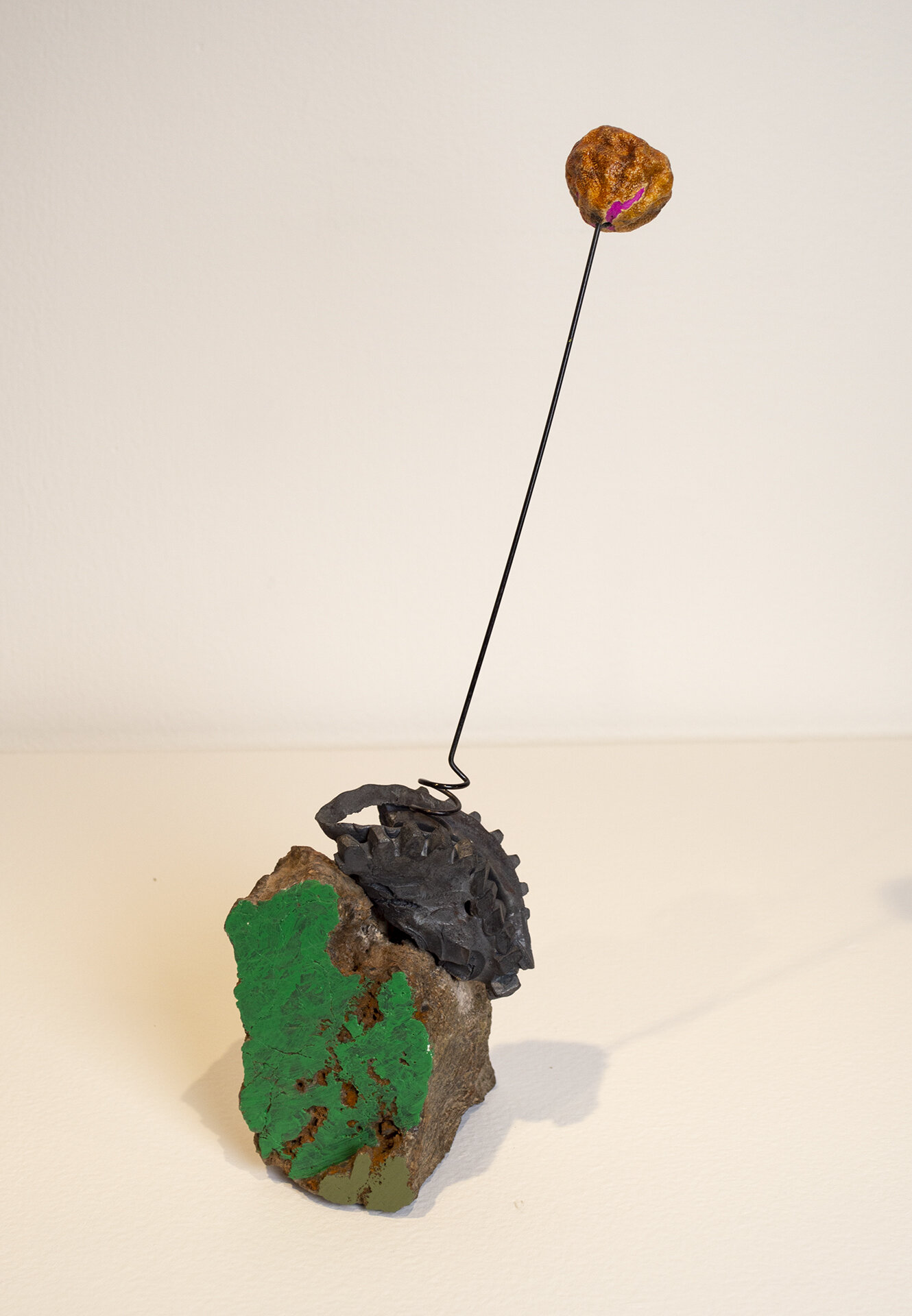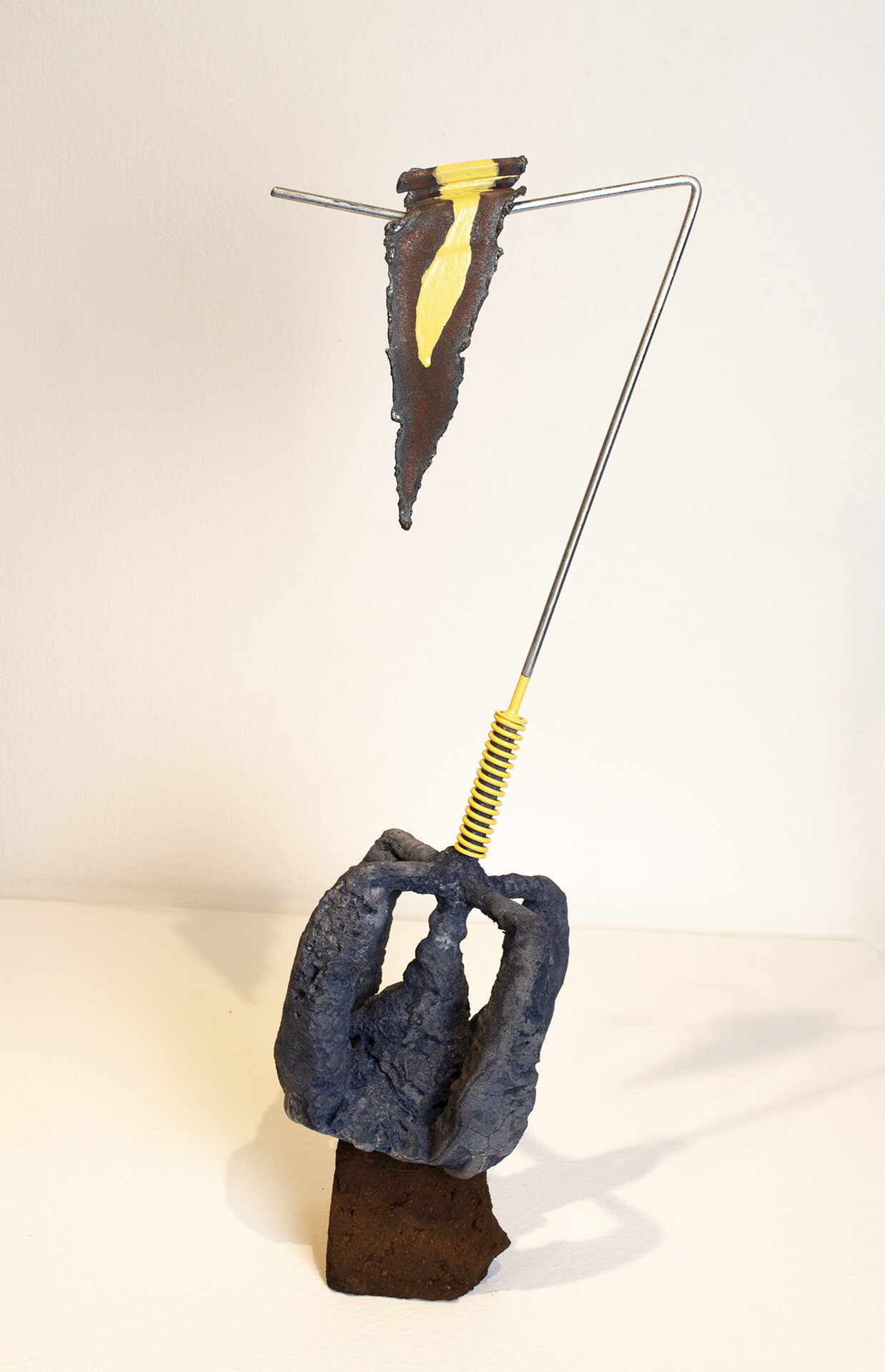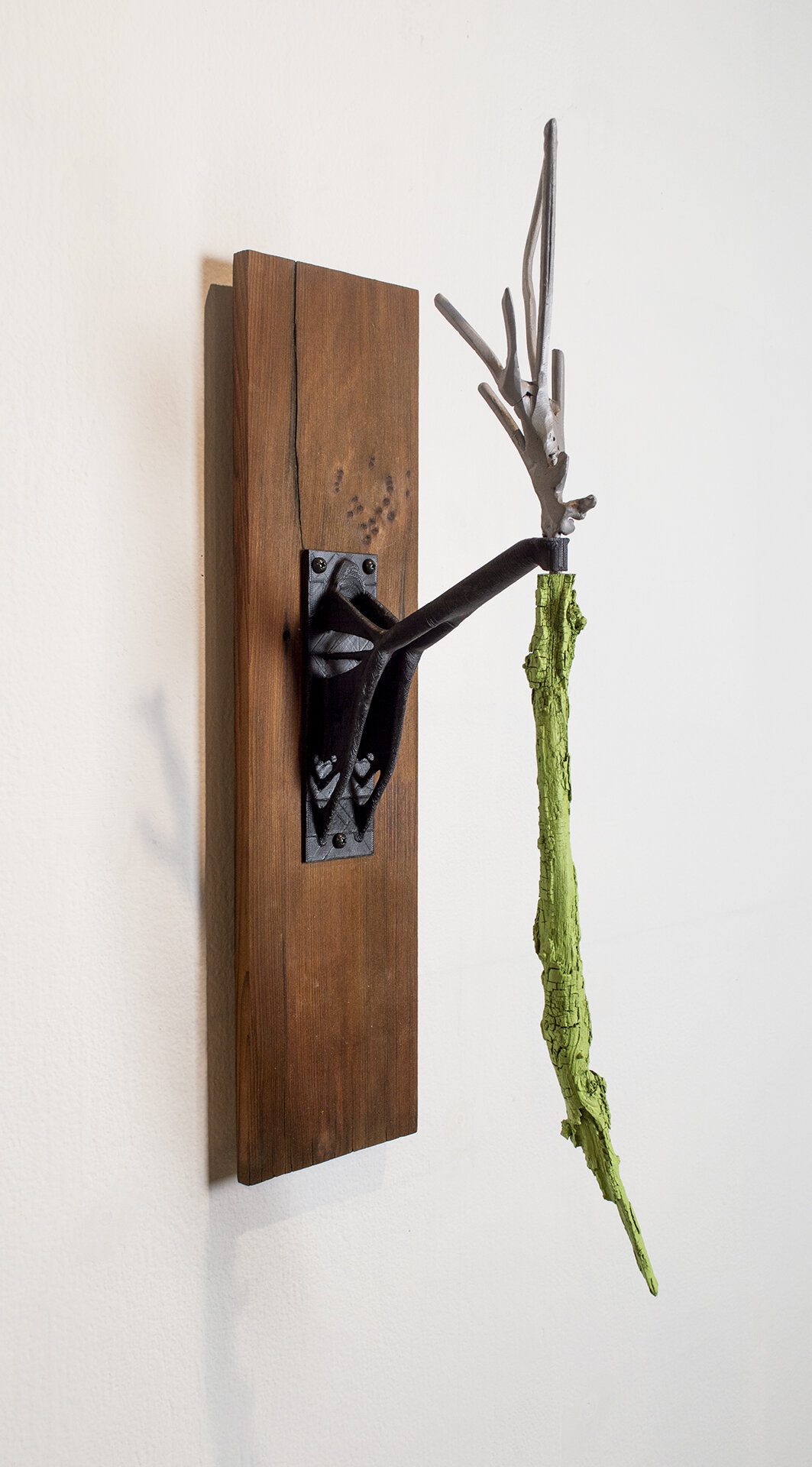graduate thesis exhibition at Eastern Michigan University
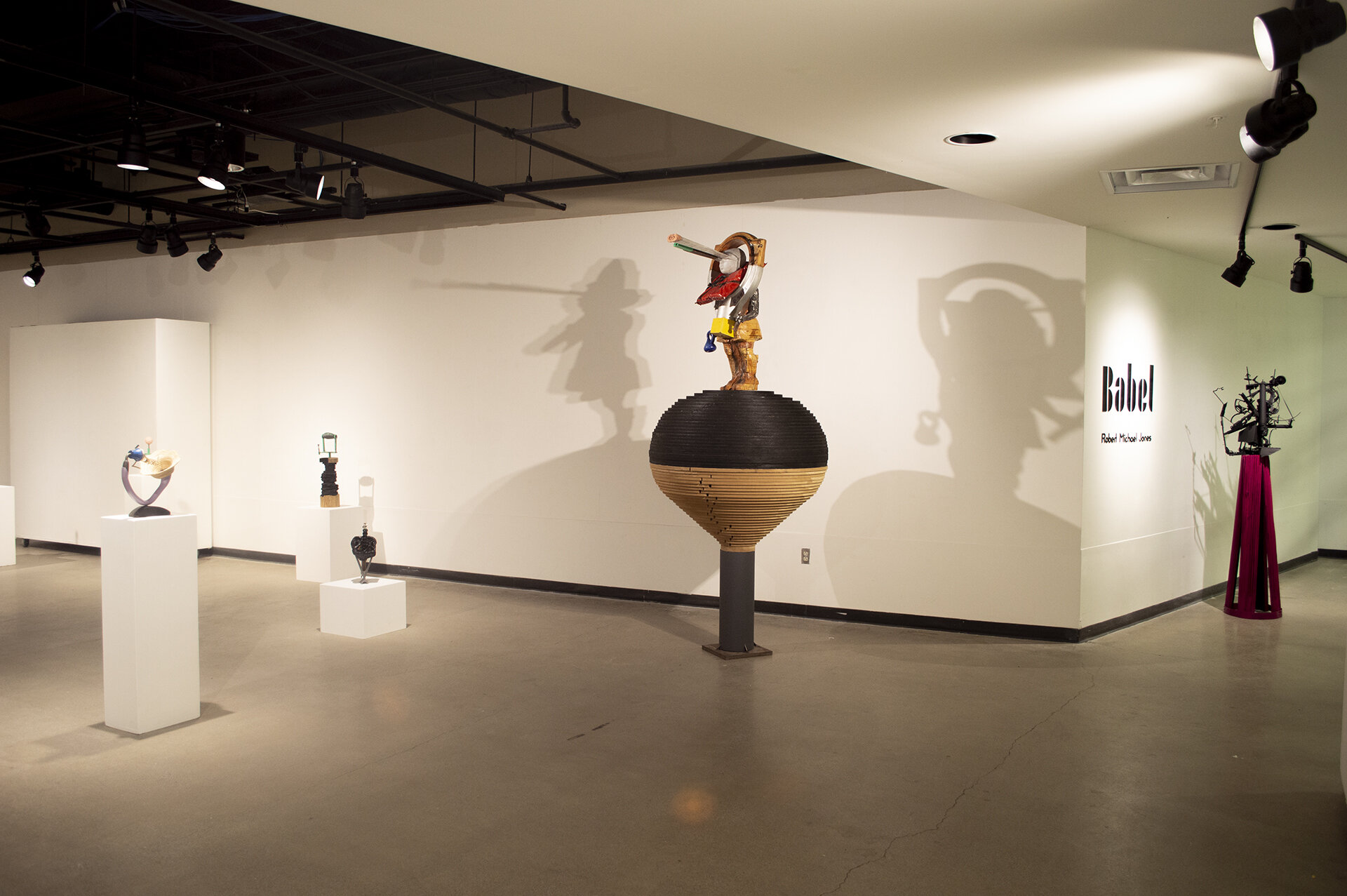
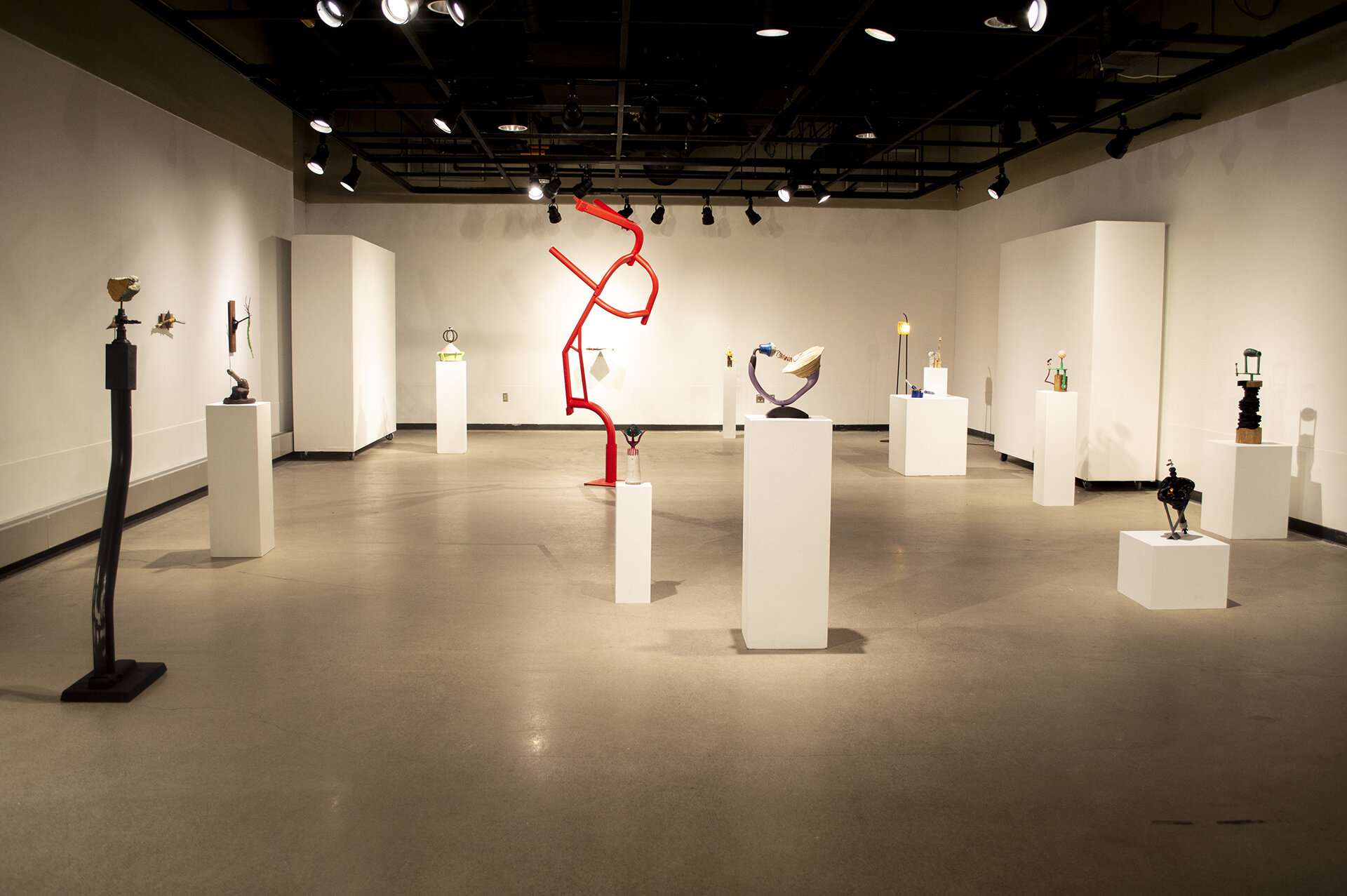
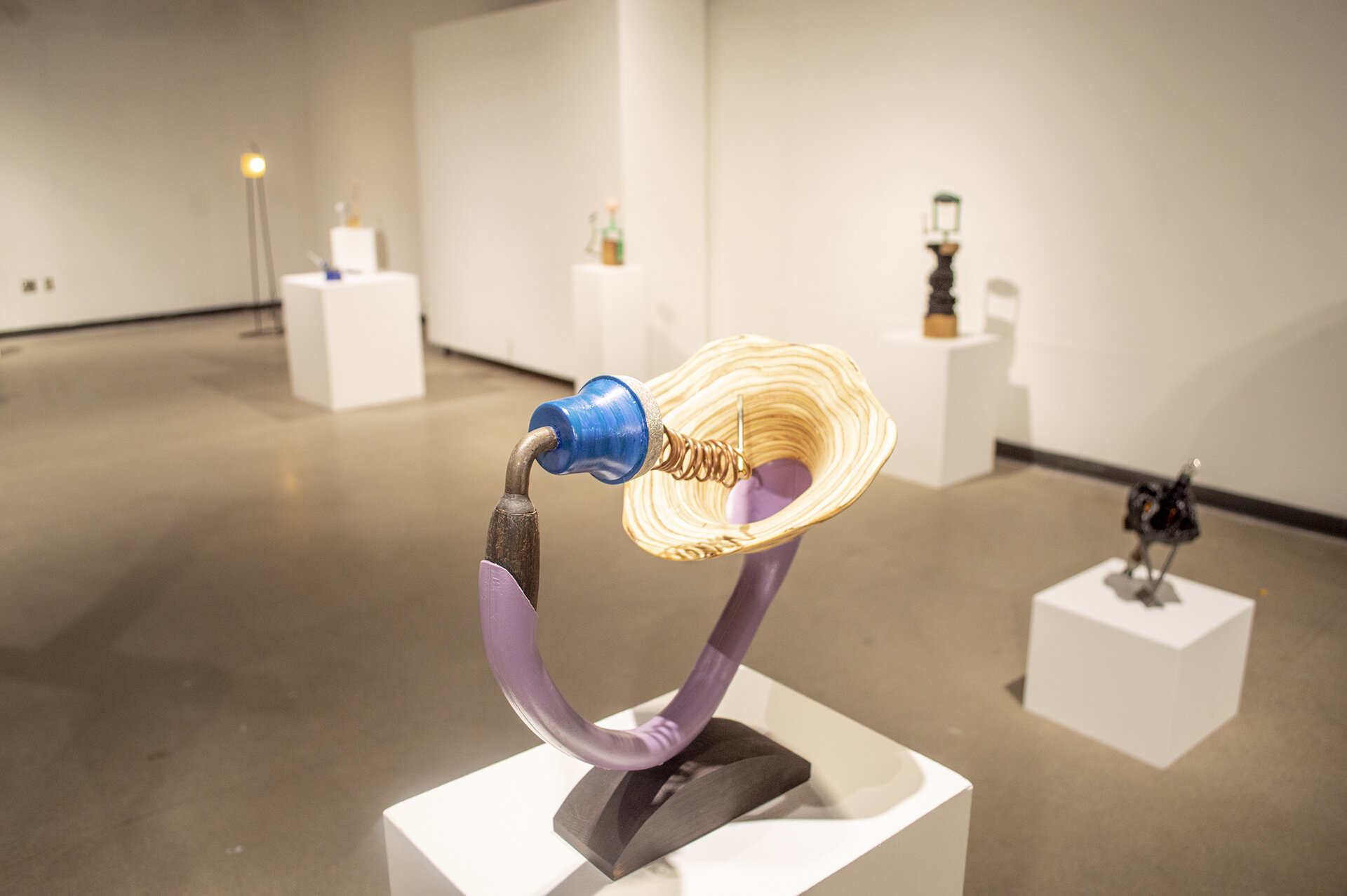
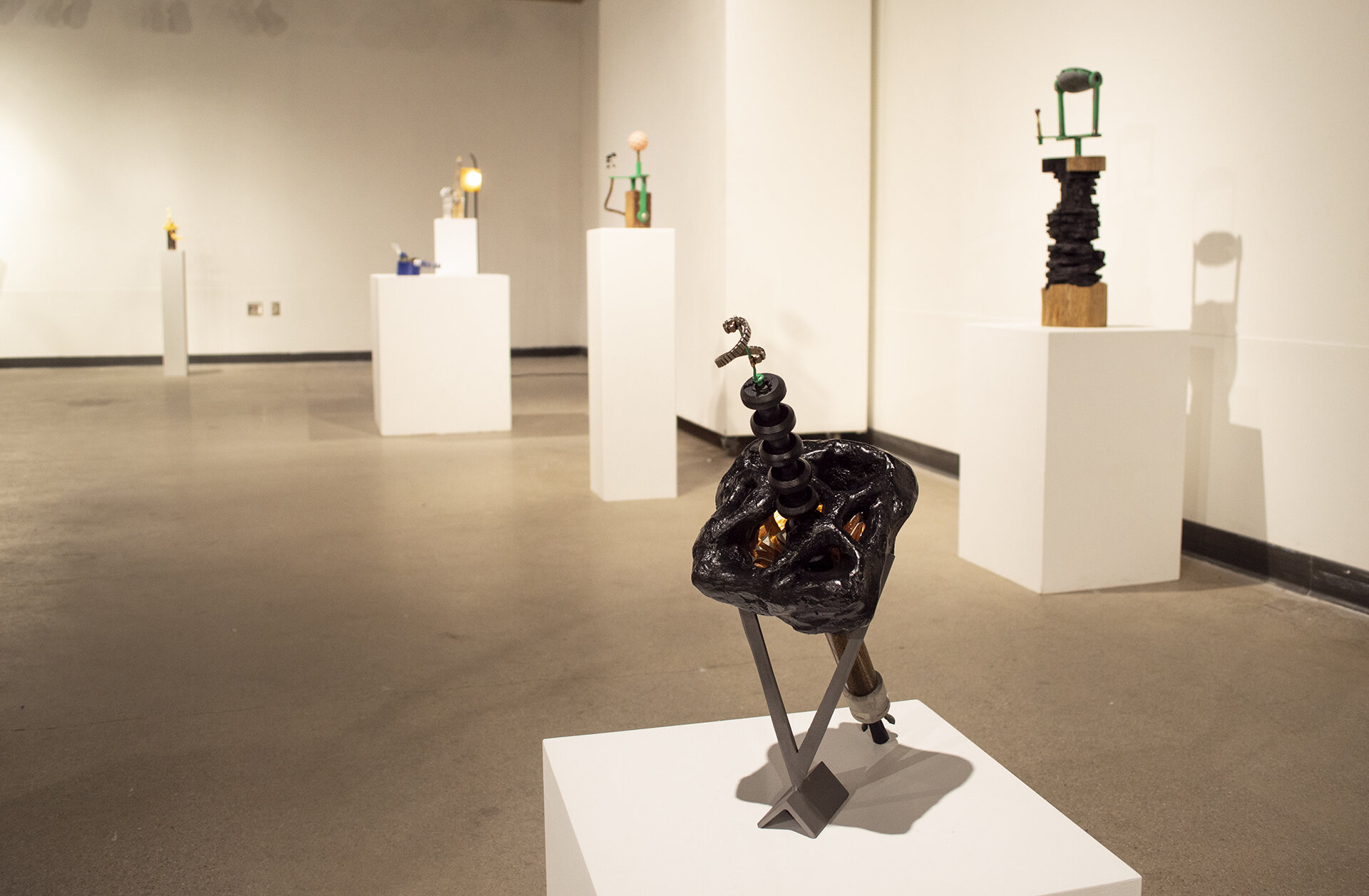

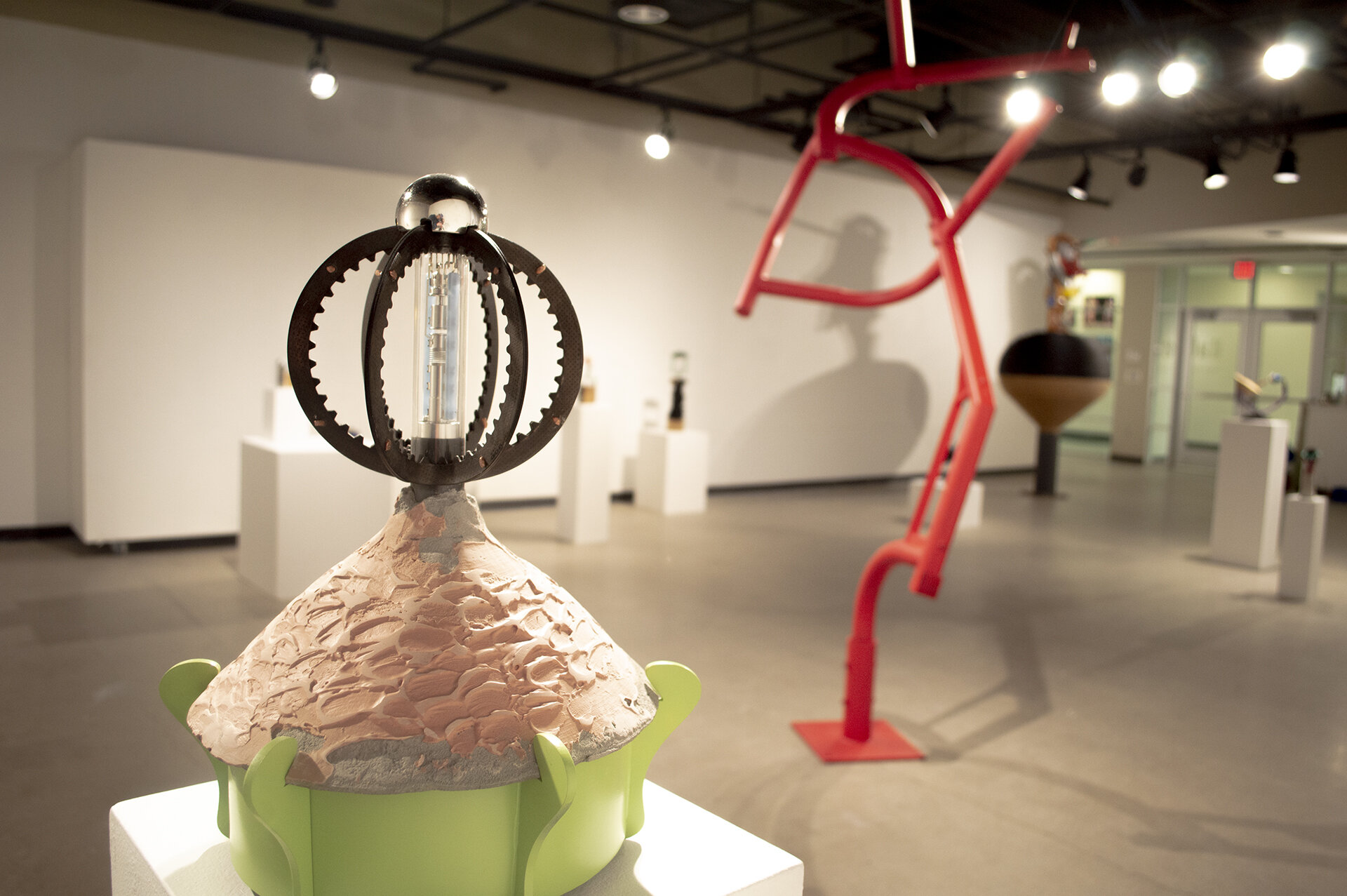


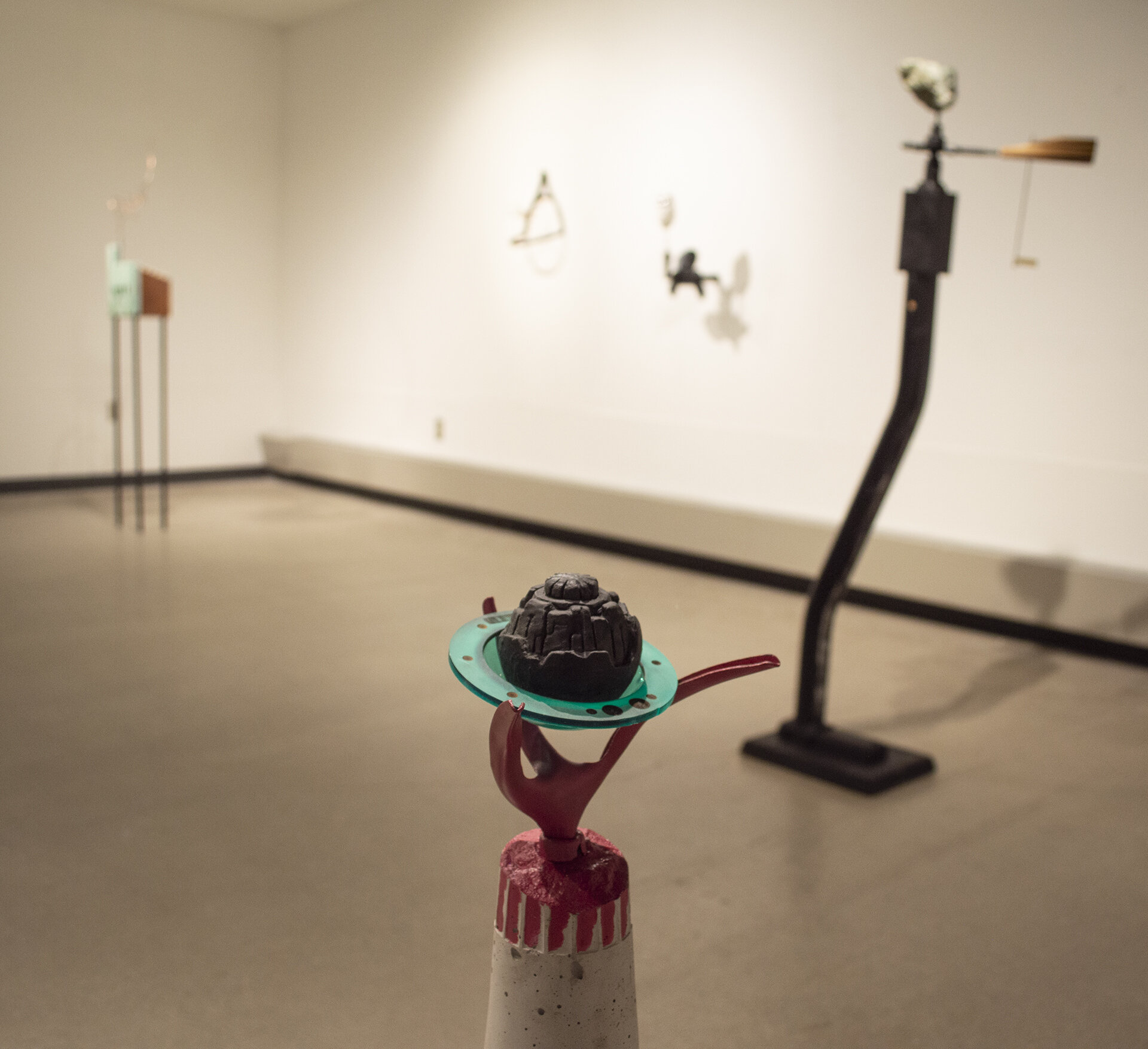
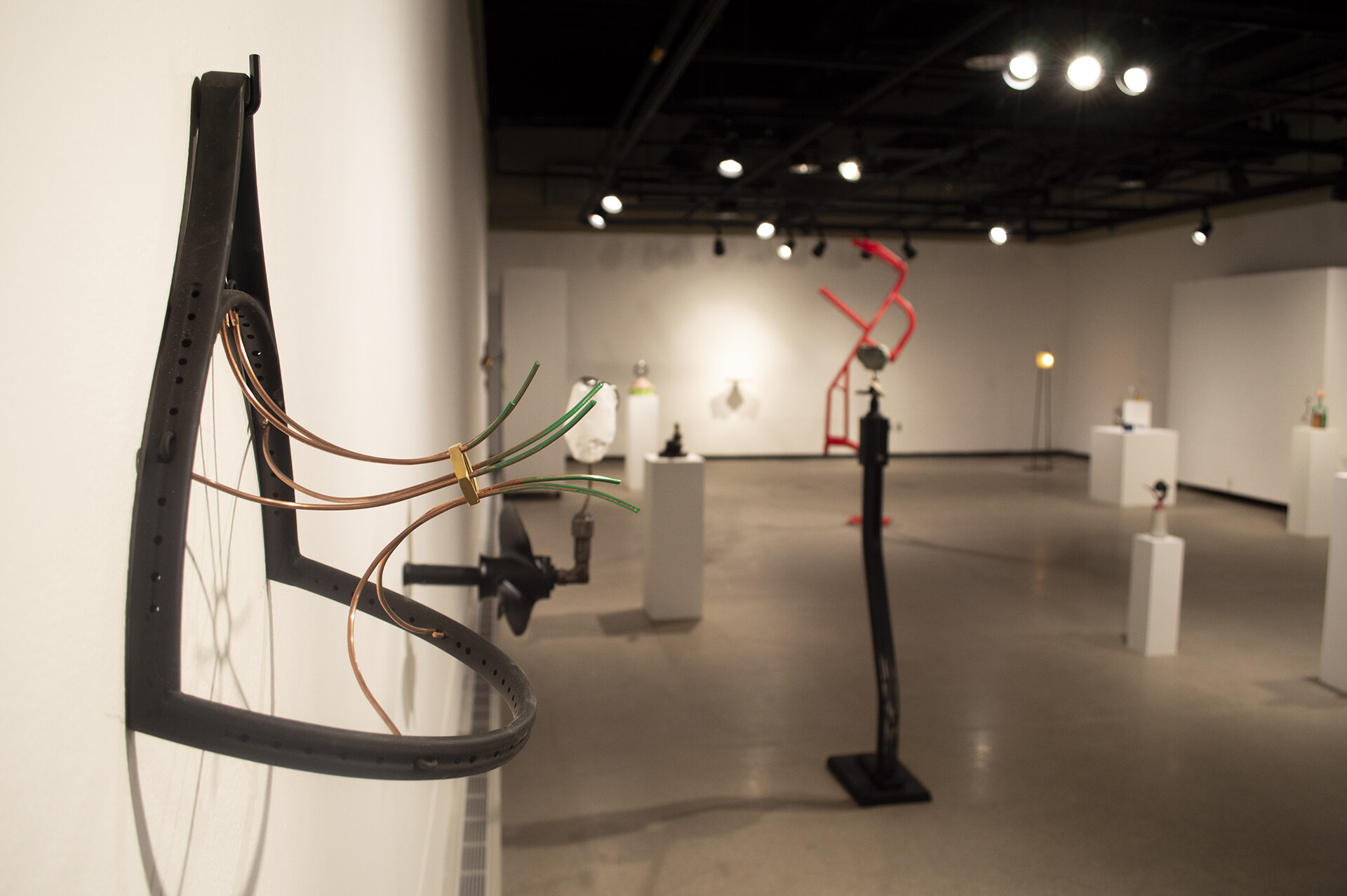
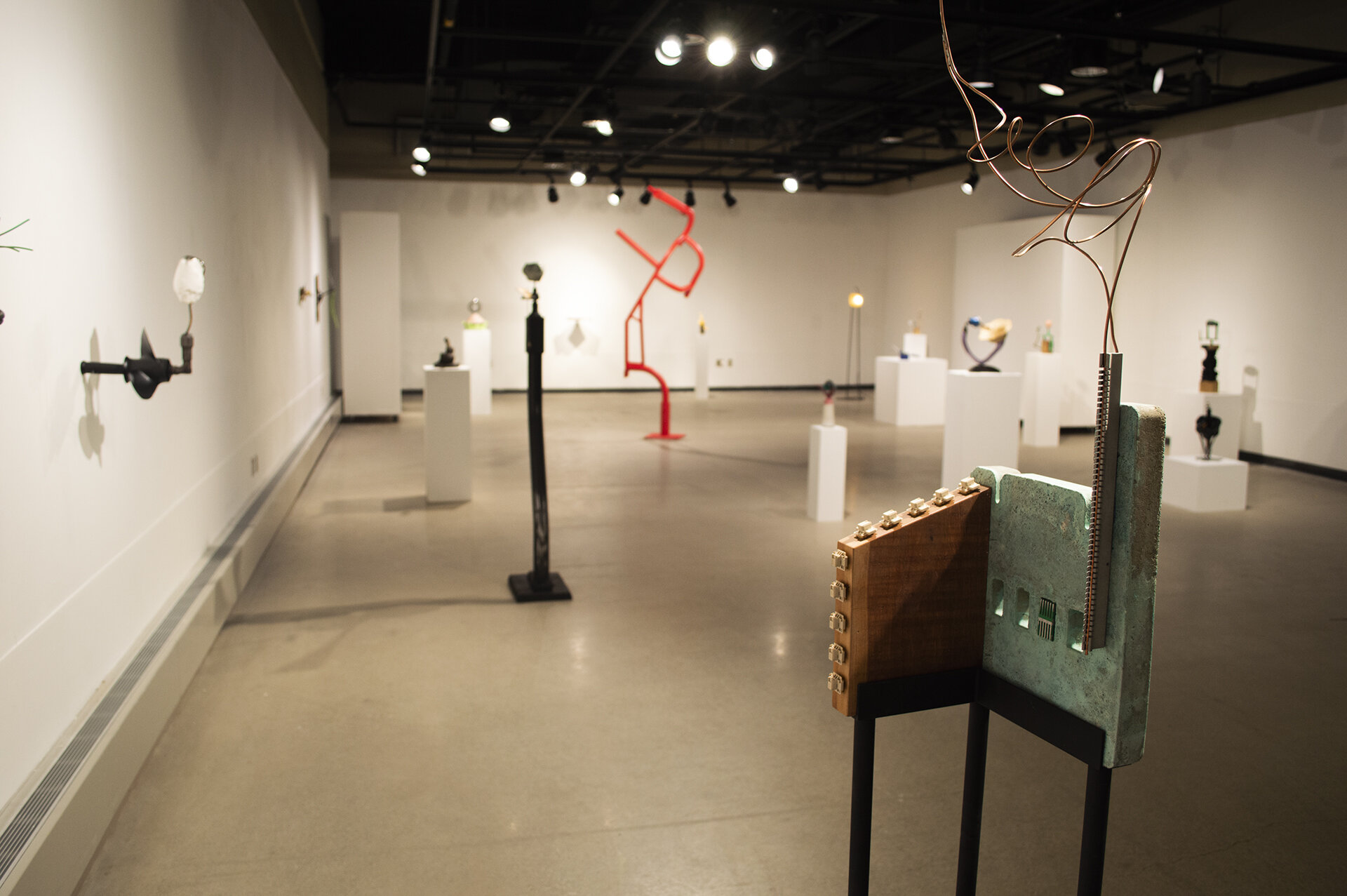
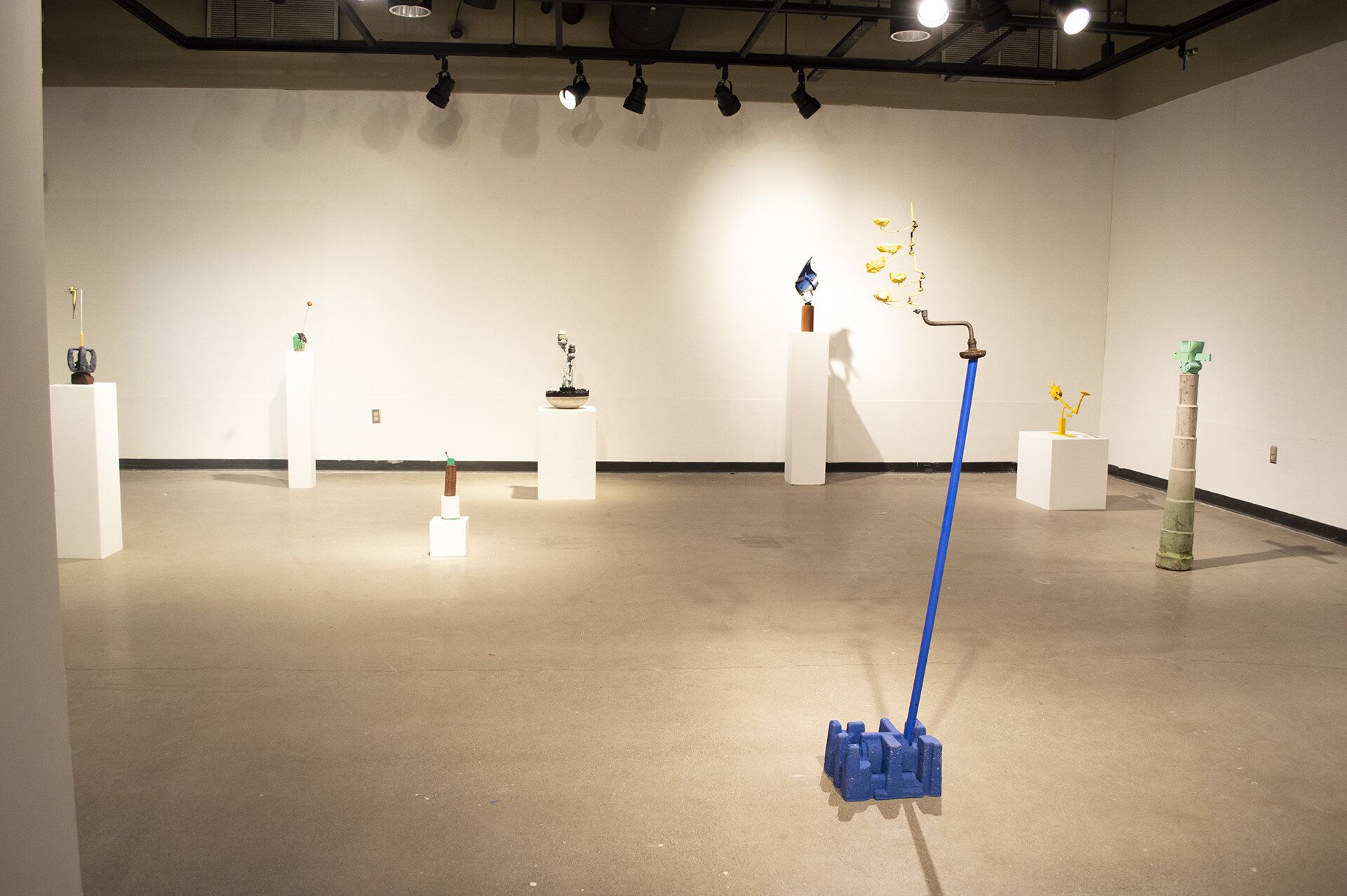
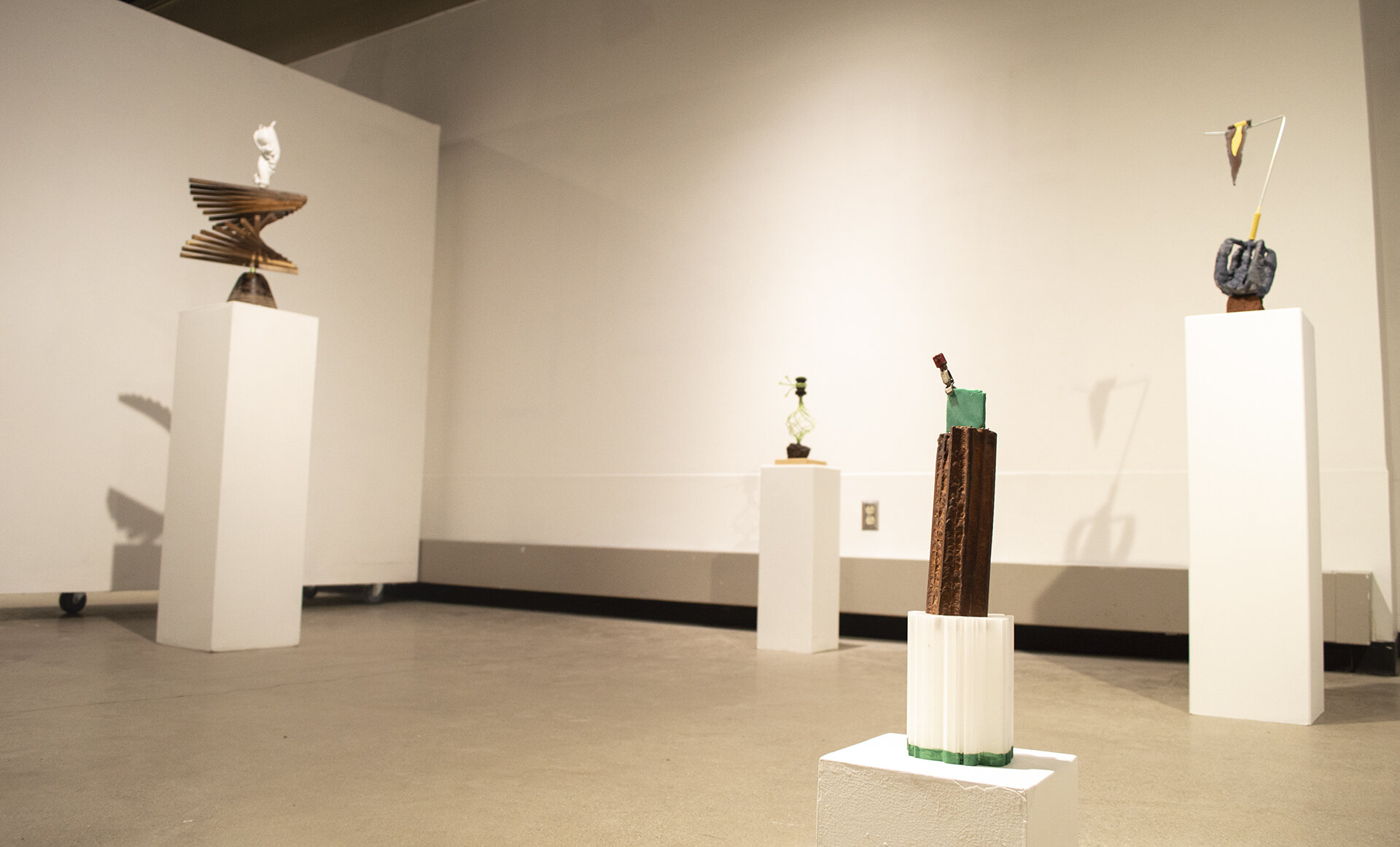
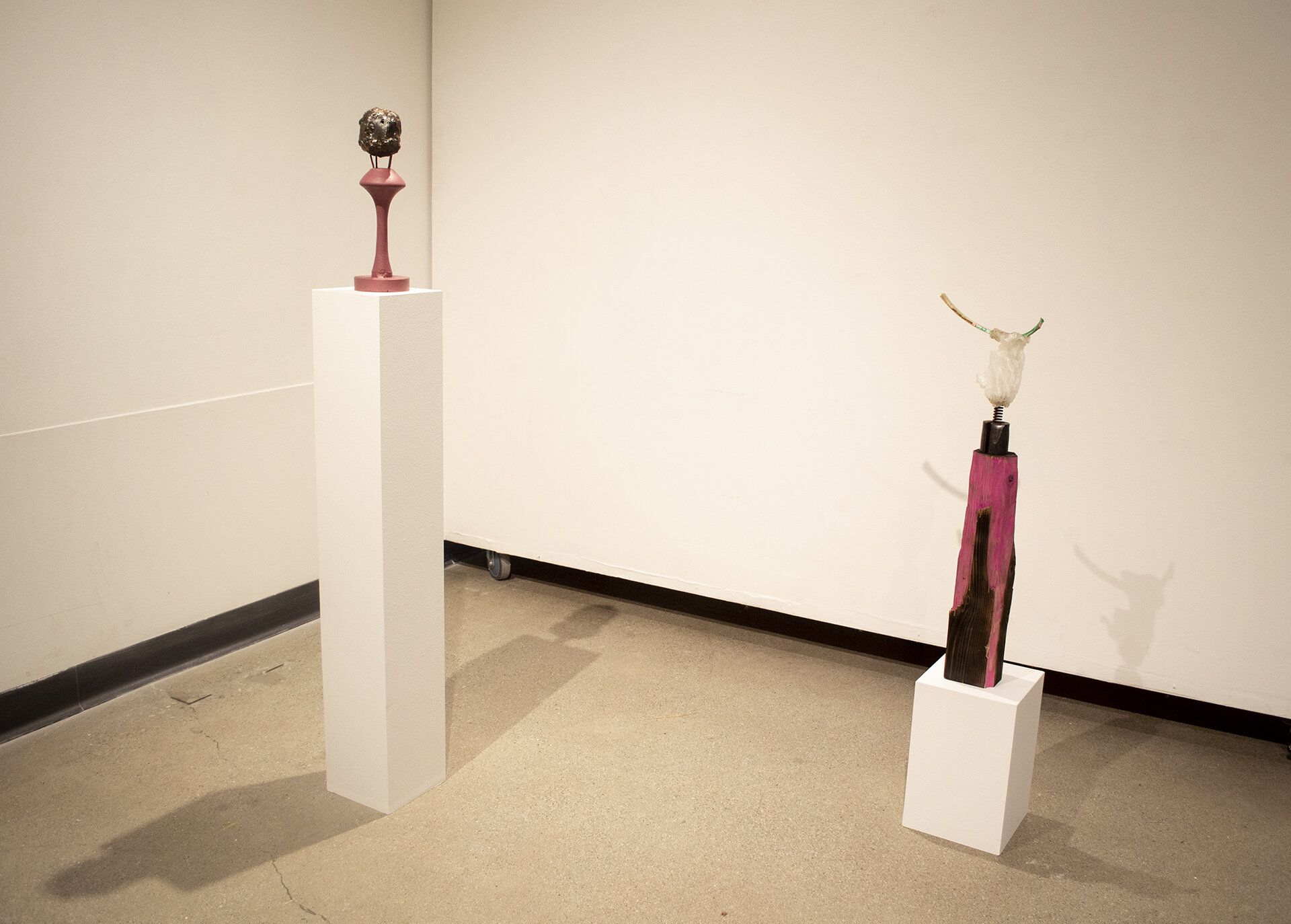
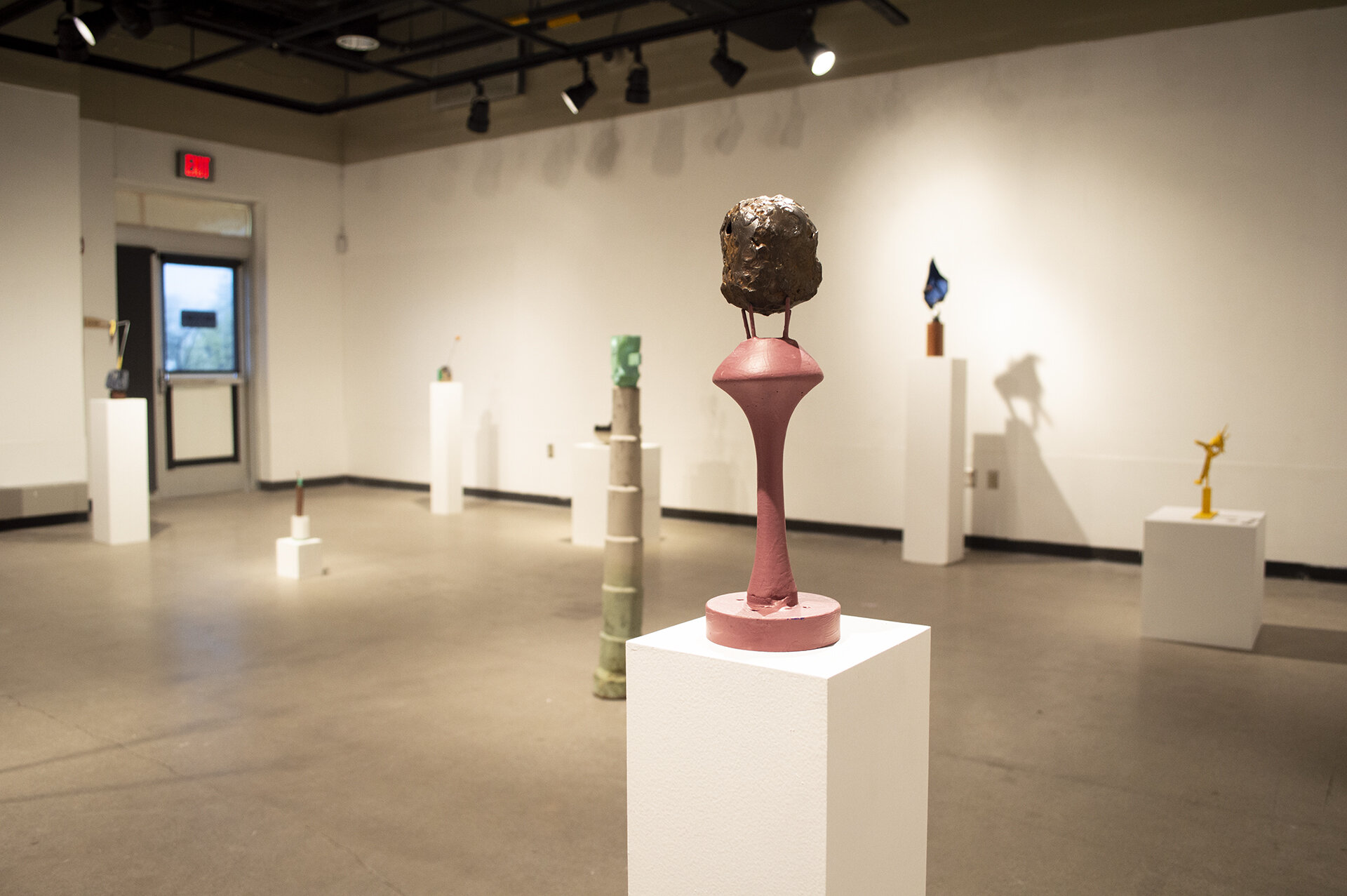
As humans we are adapted to see objects as tools. We define things by their functions. The exhibition Babel interrupts the question ‘what does it do?’ with various methods that remove an object’s identity as a tool. Parts from everyday products are obscured and constructed into mysterious devices or objects of ritual that highlight the wonderful forms that emerge from mass-production. This is an imperfect process. No matter how much the objects are obscured some of their previous identity remains and, in their reconstruction, they often become device-like once again. The question ‘what does it do?’ re-emerges. Only this time the answer is unknowable and open to playful interpretations.
In the exhibition Babel, I follow my affinity for these tools with serendipity; without knowing where I am going or why, but open to discovery and surprise. Whether the components are found in scrapyards, bought from stores or scavenged from a digital archive they are all collected from the technological environment that surrounds me. None of the objects are simply found; they are taken into the studio as material to be organized, disassembled, worked, and reworked. In my studio I subject these materials to a wide variety of tools from fundamental ones like hand worked clay and simple carving to industrial and post-industrial processes such as welding, machining, digital mapping, and computer-controlled robotics. In the use and misuse of these tools the various parts are remixed into new constructions and my own labor is layered into the existing history of the objects. The act of asserting my own agency over these objects shifts their identities from banal mass-produced objects into individuals capable of disrupting overdetermined interactions with the modern landscape.
